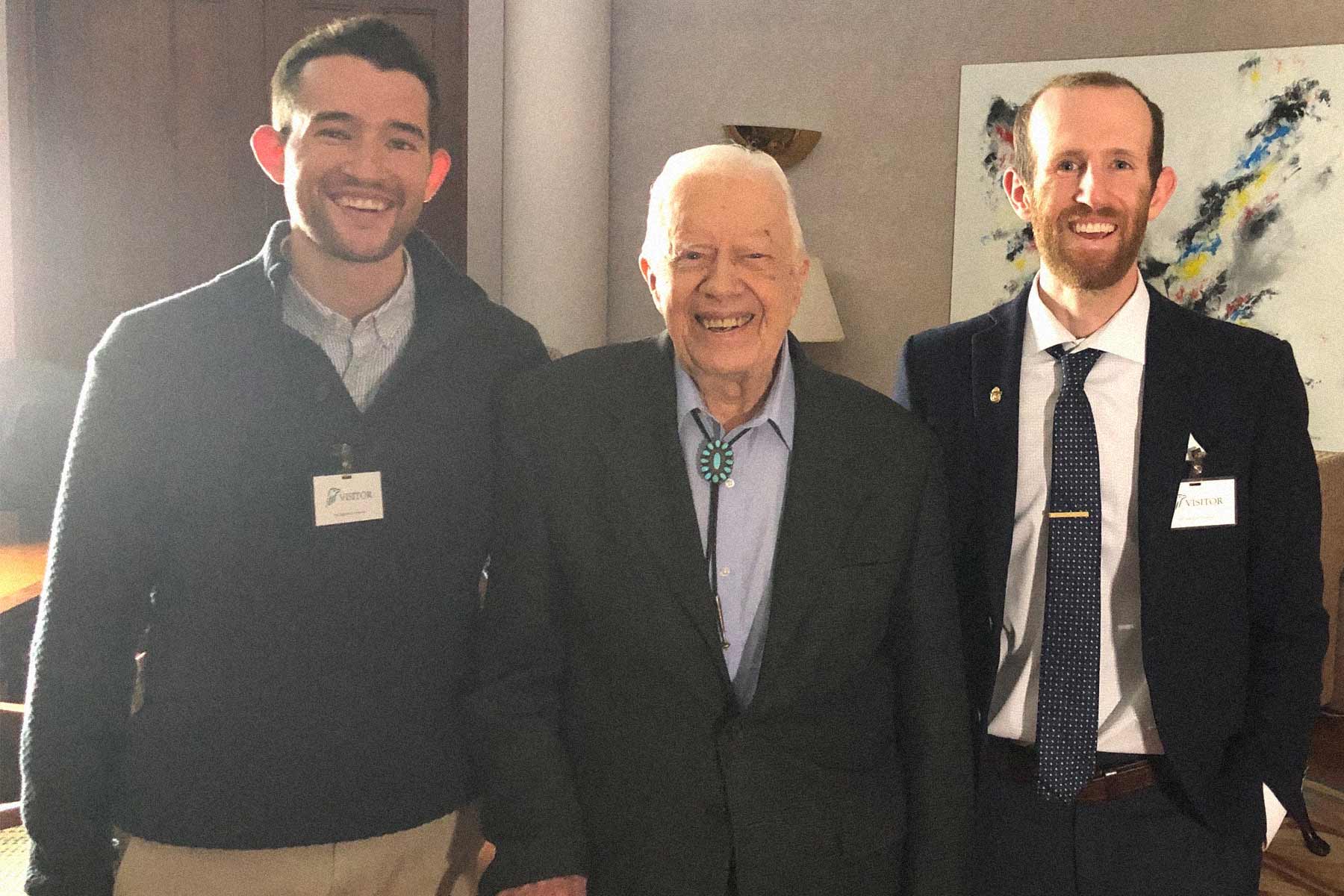
Article Summary: Historic Sites In Georgia
Historic Sites In Georgia. There are 15 incredible must-see sites for you to visit.
As a Georgia resident since 1986, I’ve been to so many of these amazing places especially since retiring from teaching in 2018. Did I mention that I taught history?
I spent a lifetime teaching about the history behind these momentous sites. Then I got to see them firsthand. And now I’m sharing the stories of these incredible places with you. It doesn’t get any better than that!
I’m going to give you my list of the top 15 historic sites in Georgia that you’ll want to see. We’ve got amazing monuments, fascinating exhibits, historic museums, legendary battlefields and so much more.
To be clear, this list includes national park sites (as in sites managed by the National Park Service) as opposed to national parks. It also includes sites not managed by the National Park Service. After all, we’re more than just parks!
Without further ado, let’s dive in.
Table Of Contents: Historic Sites In Georgia
Top 15 Historic Sites In Georgia
15. Fort King George State Historic Site
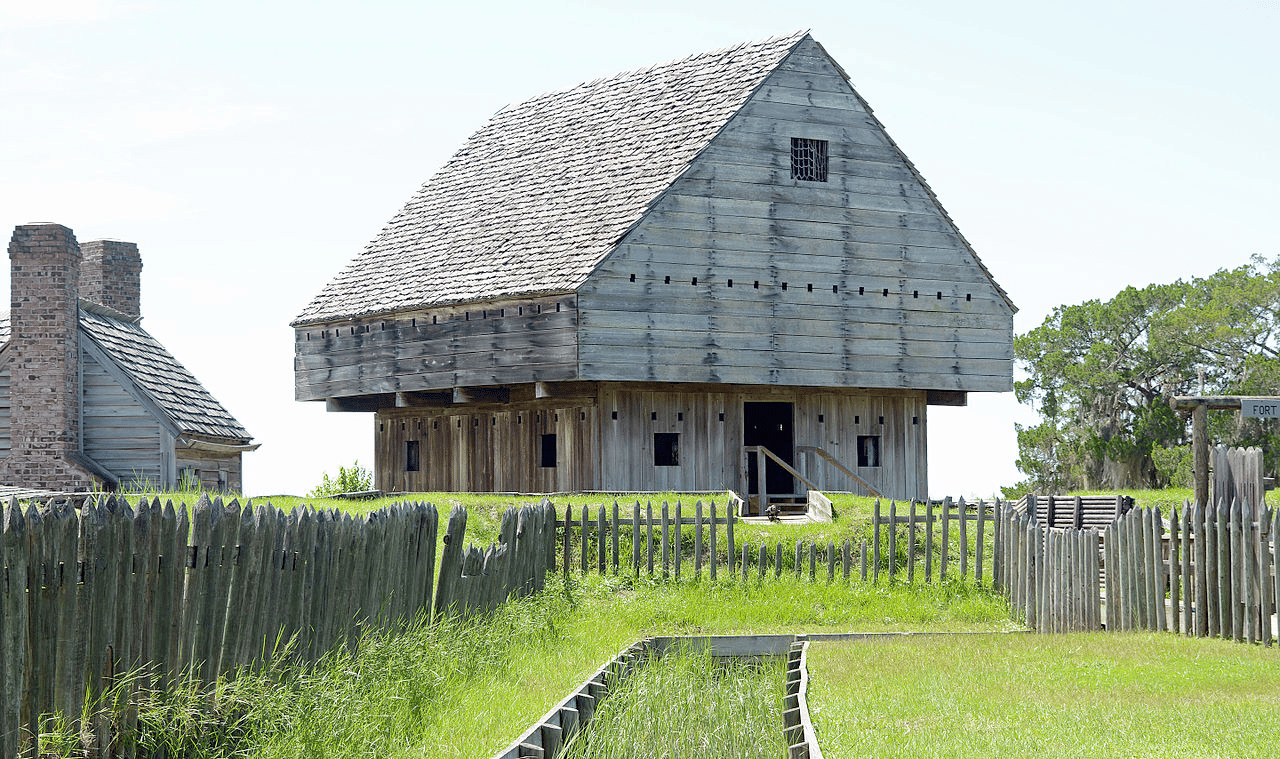
For More Than Just Parks, Georgia is home! The Pattiz Brothers were born and raised in the Peach State so when it comes to the places which we consider to be special in Georgia, we’re pleased to report that all of us have been to all of them. And some of us have been there more than once.
We kickoff our list of what we consider to be the Top 15 Best Historic Sites in the state that we call home at #15 with Fort King George State Historic Site.
Fort King George State Historic Site is located in Darien, Georgia, and was established as a British fort in 1721. It was built to serve as a base for British military and economic interests in the region, and to provide protection for British colonists from Native American attacks.
The Fort Played An Important Role In The Colonization Of Georgia
The fort was originally named Fort George, but was later renamed to Fort King George in honor of King George II. The fort was strategically located near the Altamaha River, which served as a major transportation route for goods and people in the area.
During its early years, the fort played an important role in the colonization of Georgia, as well as in the conflicts between the British and the Spanish in the region. In 1736, the Spanish attacked the fort and destroyed it, but it was rebuilt a few years later.
The fort was abandoned in 1742, after the Spanish launched another attack on the region.
In the early 20th century, efforts were made to preserve the historic site and to restore the fort to its original state. In 1933, the site was acquired by the state of Georgia and was designated as a state historic site.
Today, Fort King George State Historic Site is a popular destination for tourists and history buffs who come to learn about the region’s colonial history and to see the reconstructed fort and other historic structures on the site. The site also features a museum that displays artifacts from the fort’s history, as well as exhibits about the colonial era in Georgia.
14. Jarrell Plantation Historic Site
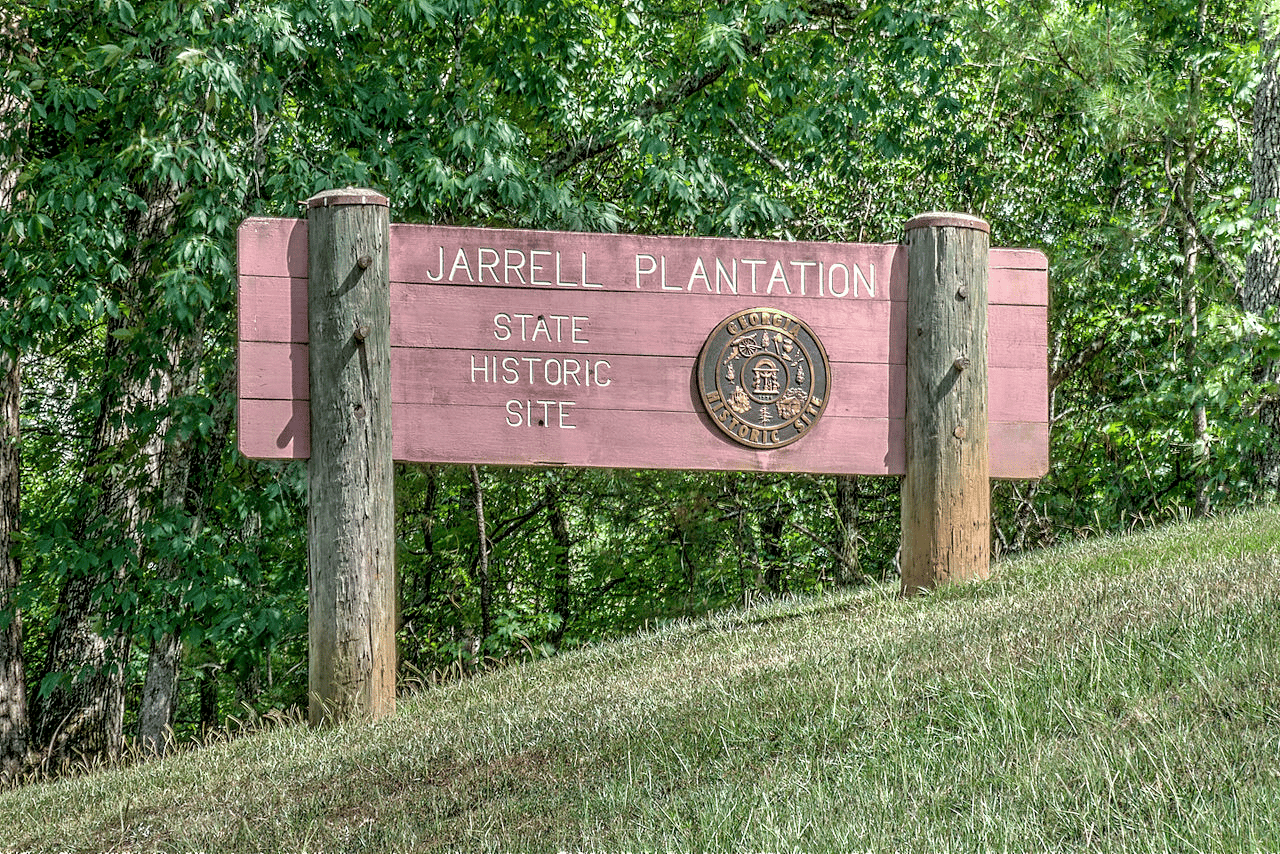
If you’re going to truly experience historic sites in the South then you need to visit at least one plantation. This is why we’ve included one. At #14 on our list of the Best Historic Sites In Georgia is Jarrell Plantation Historic Site.
Jarrell Plantation Historic Site is located in Juliette, Georgia, and was established in the mid-1800s as a working plantation. The site was owned and operated by the Jarrell family, who were prominent farmers in the area.
The plantation began as a small family farm in the early 1800s, but over time it grew to include a sawmill, cotton gin, gristmill, and other structures that were necessary for the production and processing of crops. The Jarrell family owned and operated the plantation for several generations, and it remained in their possession until the mid-1900s.
During its heyday, the plantation was a bustling center of agricultural activity, with dozens of workers and slaves laboring in the fields and mills. The plantation produced a variety of crops, including cotton, corn, and wheat, which were sold in nearby markets.
The Plantation Was A Hub Of Social & Cultural Life Too
In addition to its agricultural activities, the plantation was also a hub of social and cultural life in the region. The Jarrell family hosted social gatherings, church services, and other events on the plantation, which served as a meeting place for local residents.
Following the Civil War, the plantation faced numerous challenges, including the loss of slave labor, economic difficulties, and changing agricultural practices. Despite these challenges, the Jarrell family continued to operate the plantation until the mid-1900s, when it was sold to the state of Georgia.
Today, the Jarrell Plantation Historic Site is a popular destination for tourists and history enthusiasts who come to learn about the history of agriculture and rural life in Georgia.
The site features a number of historic buildings, including the original plantation house, a slave cabin, a smokehouse, and other structures that provide insight into life on the plantation. The site also includes exhibits and interpretive programs that help visitors understand the history and significance of the plantation.
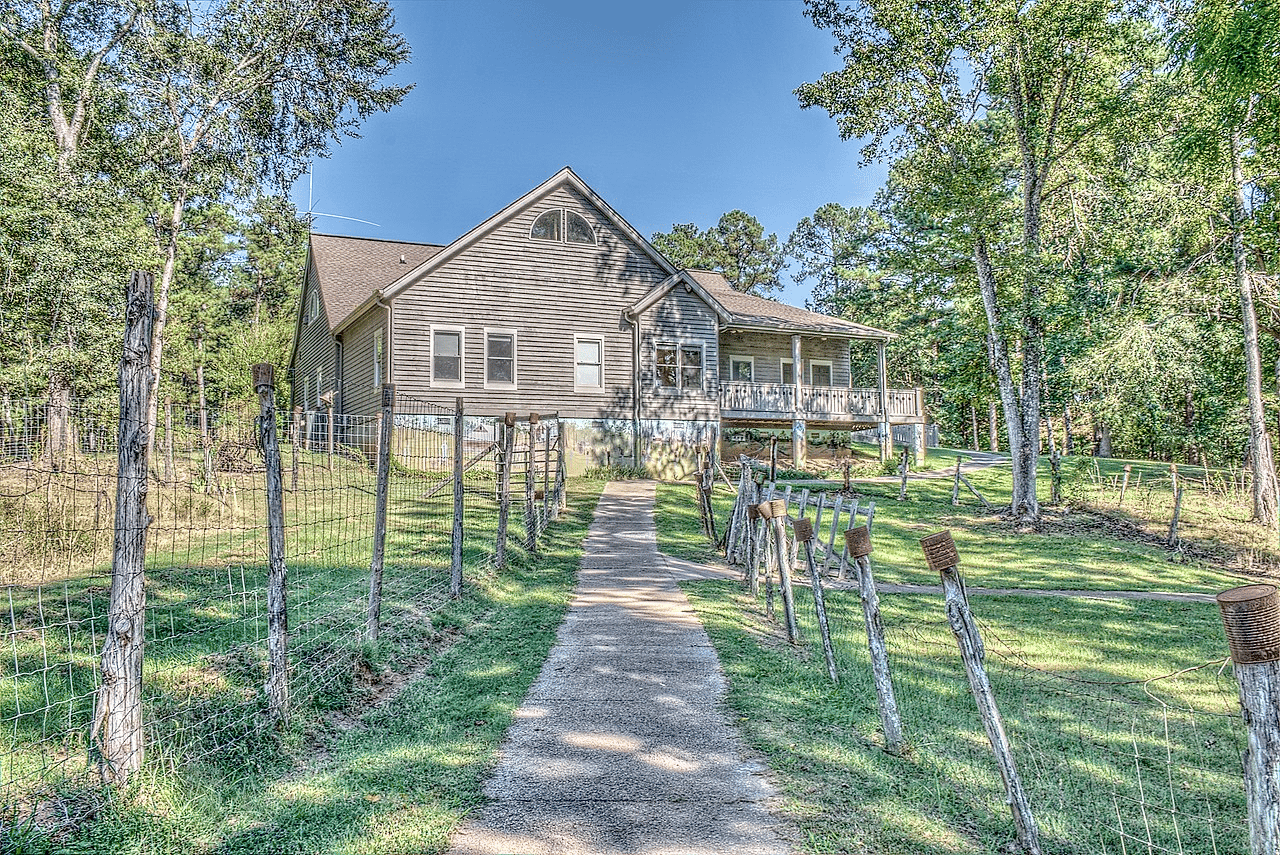
13. Pickett’s Mill Battlefield State Historic Site
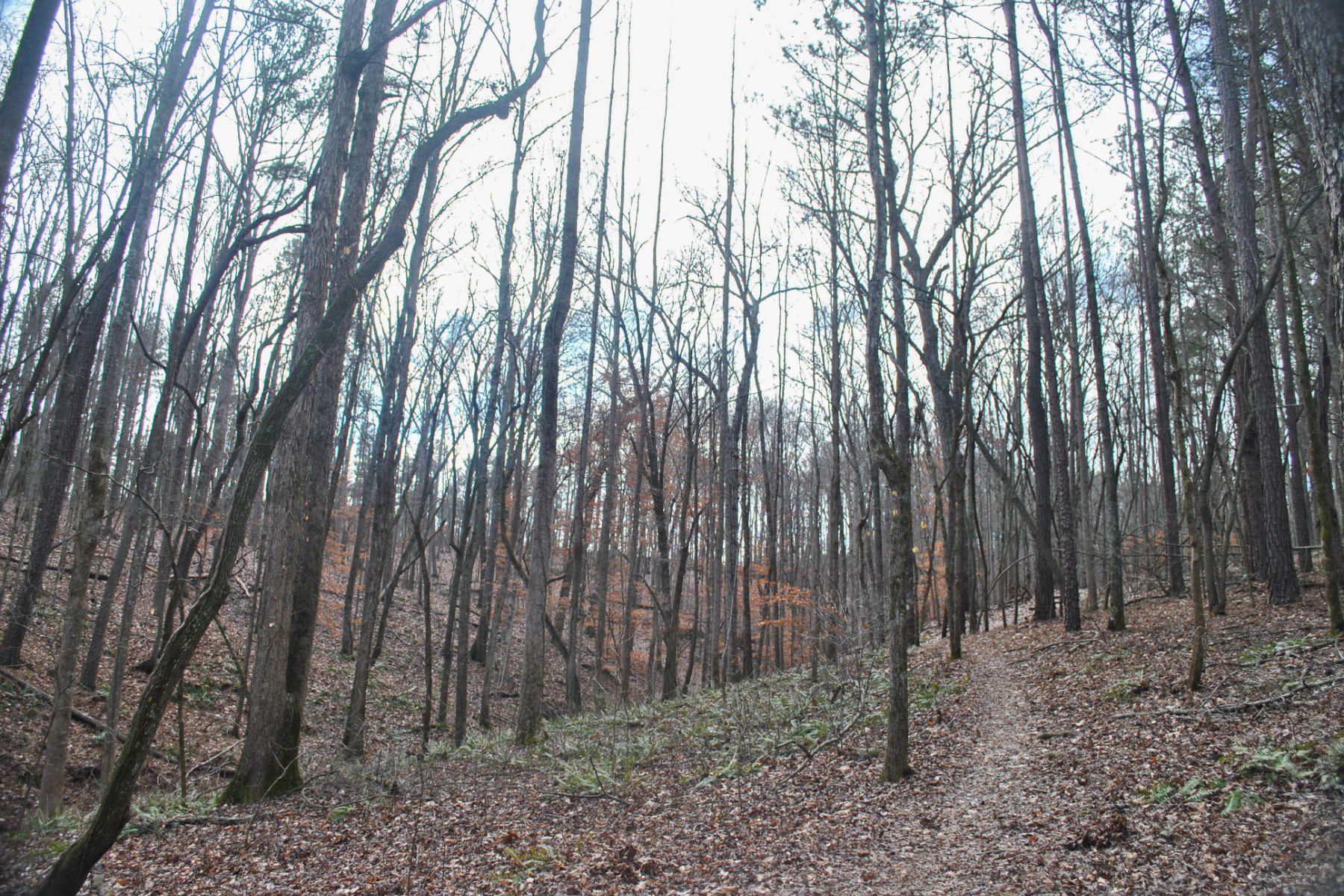
Of course, you cannot truly experience history in Georgia without including at least one site (of course we include more) that focuses on the bloodiest conflict in American history – the Civil War. Coming in at #13 on our list of the Best Historic Sites In Georgia is Pickett’s Mill Battlefield State Historic Site.
Pickett’s Mill Battlefield State Historic Site is located in Dallas, Georgia, and is the site of a major Civil War battle that took place on May 27, 1864. The battle was part of the Atlanta Campaign, which was a series of battles fought between Union and Confederate forces in the spring and summer of 1864.
The Confederate Army, led by General Joseph E. Johnston, was defending Atlanta against the Union Army, led by General William T. Sherman. On May 27, a Union force of around 14,000 soldiers under the command of General Oliver O. Howard attacked a Confederate force of around 10,000 soldiers under the command of General Patrick Cleburne.
The battle was fought in dense woods and rugged terrain, with both sides suffering heavy casualties. The Union army was eventually forced to retreat, and the Confederates claimed a victory.
The Battle Was Significant
The battle was significant because it delayed the Union Army’s advance on Atlanta, giving the Confederate Army more time to prepare its defenses. However, the victory was short-lived, as the Union Army ultimately captured Atlanta in September of that year.
Following the end of the Civil War, the battlefield became a site of pilgrimage for veterans and other visitors who came to remember the events that took place there. In the early 20th century, efforts were made to preserve the battlefield as a historic site.
In 1935, the state of Georgia purchased the land and established Pickett’s Mill Battlefield State Historic Site.
Today, the site is a popular destination for tourists and history enthusiasts who come to learn about the Civil War and to explore the site’s hiking trails and historic landmarks, including the battlefield itself and a number of historic buildings and markers.
The site also includes a museum and visitor center that provides additional information and interpretation of the battle and its significance.
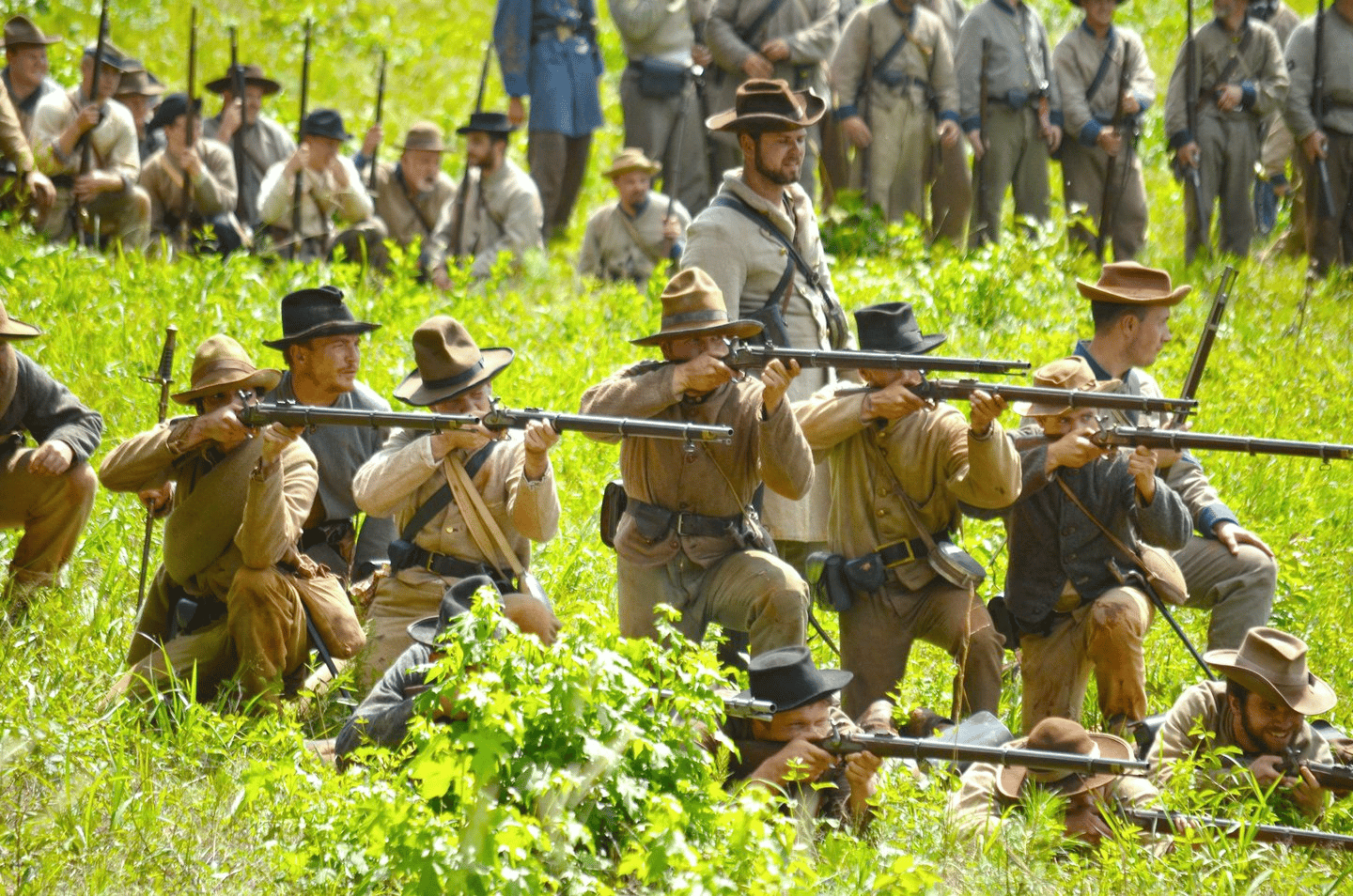
12. Reynolds Mansion On Sapelo Island
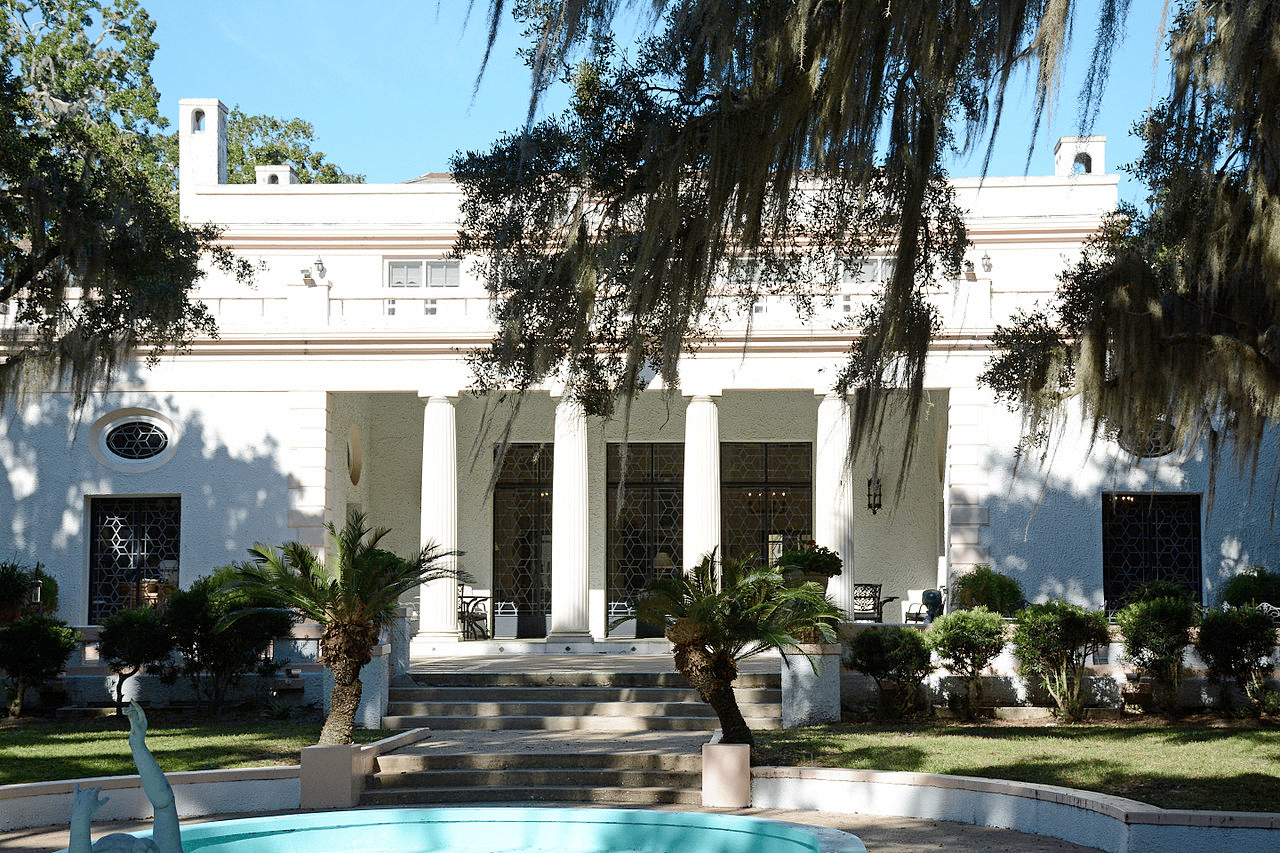
[Reynolds mansion, Sapelo Island, GA | Courtesy of Wikimedia Commons]
We go from the site of a Civil War battlefield to one of Georgia loveliest mansions. At #12 on our list of the Best Historic Sites In Georgia is Reynolds Mansion On Sapelo Island.
The Reynolds Mansion has a rich and complex history that spans several centuries.
The island was originally inhabited by Native American tribes, who lived on the island for thousands of years prior to the arrival of European explorers. In the 16th century, Spanish explorers visited the island, but it was not until the 18th century that it was settled by Europeans.
In the 1800s, the island was purchased by Thomas Spalding, a wealthy planter who built a large plantation on the island. Spalding’s plantation was one of the largest in the region, and he relied heavily on the labor of enslaved Africans to cultivate crops such as cotton, rice, and indigo.
The Reynolds Mansion was built on the island in the early 20th century by R.J. Reynolds. He was the founder of the R.J. Reynolds Tobacco Company. Reynolds purchased the island in 1934 and built the mansion as a private retreat for himself and his family.
During World War II, the island was used by the military as a training site, and the mansion was used as a barracks and hospital. After the war, the mansion was returned to the Reynolds family, who continued to use it as a vacation home.
Reynolds Island Today
In 1973, the Reynolds family sold the island to the state of Georgia, which established the Sapelo Island National Estuarine Research Reserve. The mansion was added to the National Register of Historic Places in 1977, and today it is managed by the state of Georgia as a historic site.
The mansion is open for tours, and visitors can learn about the history of the island and the mansion, as well as the complex and often troubling history of slavery and plantation life in the region.
The island is also home to a vibrant Gullah Geechee community, whose ancestors were enslaved on the island and who have preserved many of the cultural traditions of their African ancestors.
11. Dahlonega Gold Museum
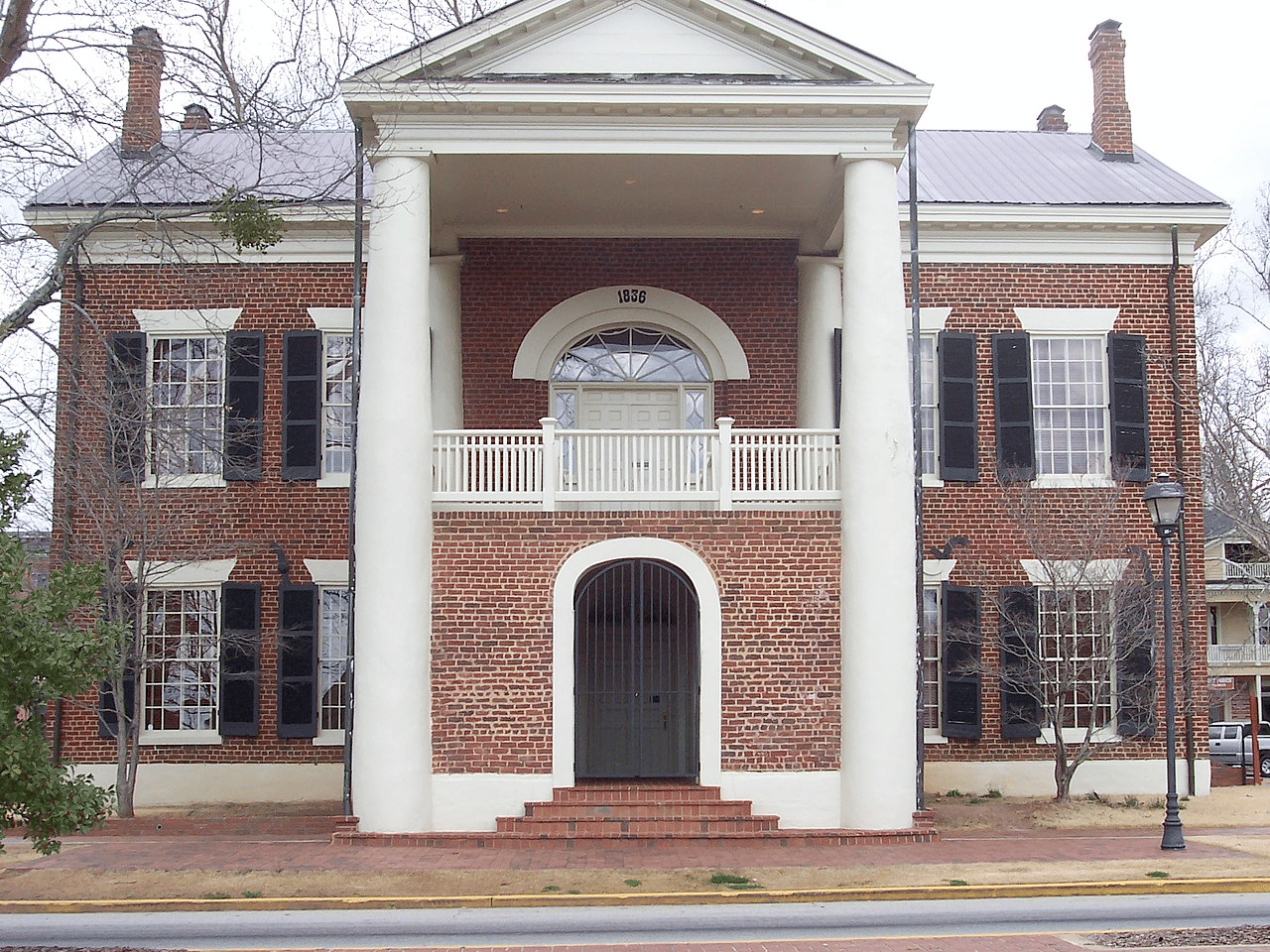
When people think about the famous Gold Rush it’s typically California which springs to mind. Nevertheless, Georgia had its own Gold Rush which is celebrated at the Dahlonega Gold Museum. It’s #11 on our list of the Best Historic Sites In Georgia.
The Dahlonega Gold Museum is located in Dahlonega, Georgia, and is housed in the historic Lumpkin County Courthouse. The museum is dedicated to the history of gold mining in Georgia and the United States, with a particular emphasis on the gold rush that took place in the region in the 19th century.
Gold was first discovered in Dahlonega in 1828, and the discovery sparked a gold rush that attracted thousands of prospectors to the region. The town of Dahlonega grew rapidly, and by the mid-1830s it was the center of gold mining activity in the region.
The Lumpkin County Courthouse, where the museum is located, was built in the 1830s and served as the center of government for the region. The courthouse was used as a mint during the gold rush, and it was here that gold coins were minted for the state of Georgia.
After the gold rush ended in the mid-19th century, the courthouse continued to serve as a center of government for the region. In the 1960s, the courthouse was restored and converted into a museum dedicated to the history of gold mining in Georgia.
Today, the Dahlonega Gold Museum is a popular destination for tourists and history enthusiasts who come to learn about the history of the gold rush and to explore the museum’s exhibits, which include artifacts and displays related to gold mining and the minting of gold coins. The museum also offers guided tours and educational programs for visitors of all ages.
Top 10 Historic Sites In Georgia
10. Jefferson Davis Memorial Historic Site
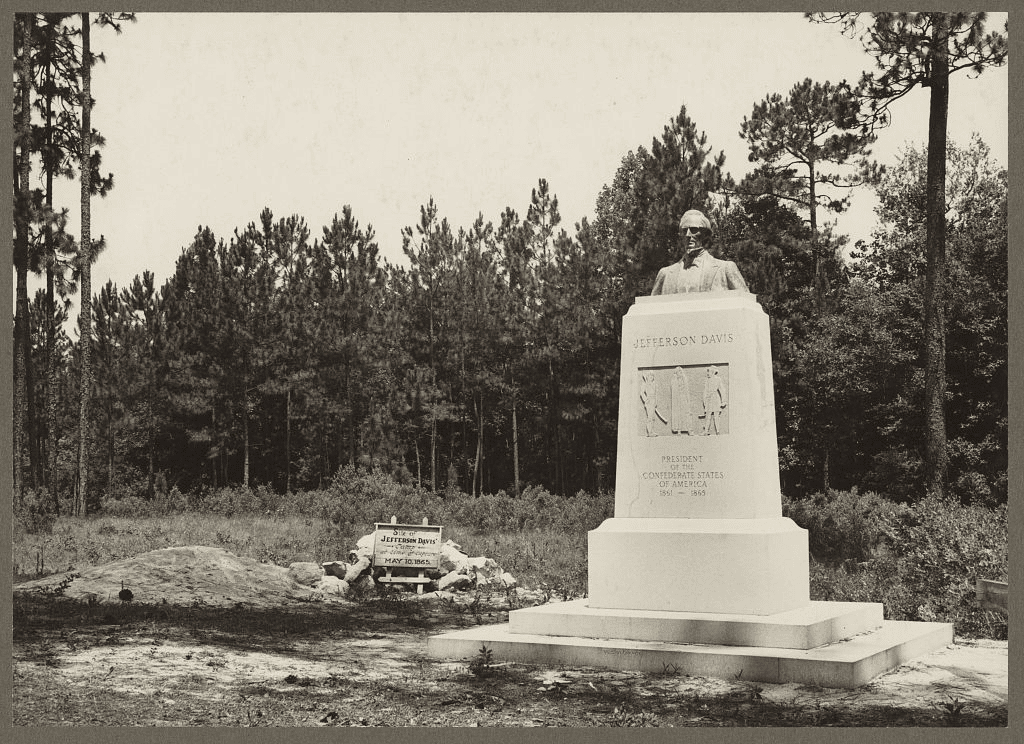
We’re on to our list of the Top 10 Best Historic Sites In Georgia. At #10 we have a site which examines the life and legacy of the only man to ever serve as President – of the Confederate States of America. It’s the Jefferson Davis Memorial Historic Site.
Jefferson Davis
Jefferson Davis (1808-1889) was an American politician and statesman who served as the President of the Confederate States of America from 1861 to 1865 during the American Civil War.
Born in Kentucky, Davis was educated at the United States Military Academy at West Point and served in the US Army before becoming a planter and politician in Mississippi.
In 1845, Davis was elected to the US House of Representatives, where he became an advocate for southern states’ rights and the expansion of slavery into new territories. He went on to serve in the U.S. Senate and as Secretary of War under President Franklin Pierce.
President Of The Confederate States Of America
When Mississippi seceded from the Union in 1861, Davis resigned from the Senate and was selected as the provisional President of the Confederate States of America. He was subsequently elected to a six-year term as President in 1862.
As President of the Confederacy, Davis played a key role in directing the Confederate war effort. He struggled to maintain unity and support among the various southern states, and his military strategy was often criticized for its lack of flexibility and innovation.
Following the surrender of Confederate forces in 1865, Davis was captured and imprisoned for two years. After his release, he retired to private life and wrote his memoirs, which remain an important historical document of the Civil War era.
Today, Davis is a controversial figure in American history, seen by some as a champion of states’ rights and by others as a defender of slavery and the Confederacy.
The Jefferson Davis Memorial Historic Site
The Jefferson Davis Memorial Historic Site is a state park located in Irwin County, Georgia. The park is situated on a 13-acre site that includes a museum, a gift shop, and a memorial to Davis.
The park was established in 1965 by the Georgia Department of Natural Resources and is one of several sites in the state that commemorate the Civil War and the Confederacy.
The centerpiece of the park is the Jefferson Davis Memorial, a 55-foot tall concrete and granite monument that was dedicated in 1957. The monument features a statue of Davis at the top, surrounded by four pillars that represent the four years of the Civil War.
The park also includes a museum that features exhibits related to Davis and the Confederacy. The museum’s exhibits include artifacts and displays related to Davis’s life and political career, as well as information about the causes and events of the Civil War. The museum also features a gift shop where visitors can purchase souvenirs and books related to the history of the Confederacy.
The park is open year-round and offers guided tours and educational programs for visitors of all ages. The park is particularly popular with Civil War history enthusiasts and those interested in the legacy of the Confederacy.
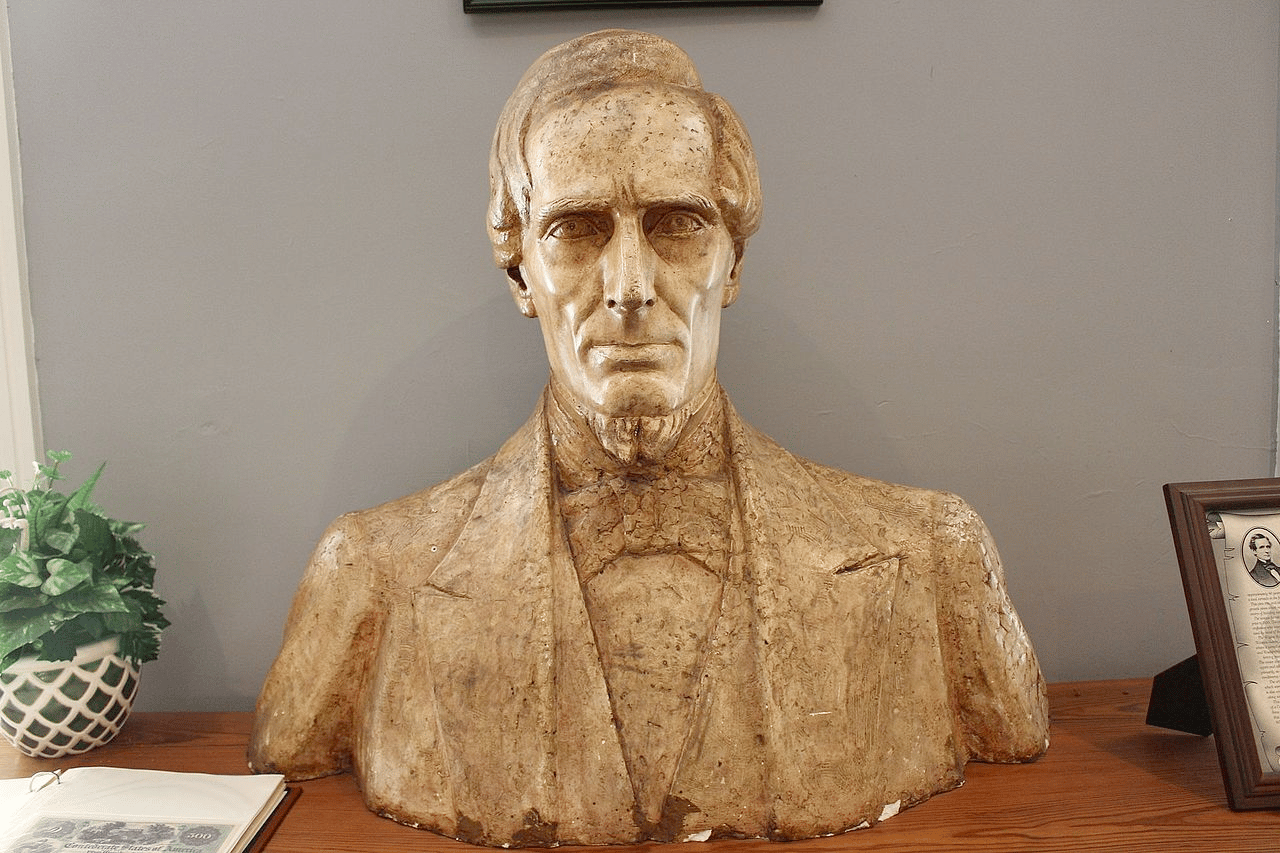
9. Fort Frederica National Monument

Georgia has more to offer than just Civil War history. Before there was even a United States of America, Georgia’s Fort Frederica played a decisive role in the history of the region. This is why we wanted to be sure to include it on our list of the Best Historic Sites in Georgia and we have done so at #9.
Fort Frederica National Monument is located on St. Simons Island, Georgia. It commemorates the settlement of the area by the British in the early 18th century. The monument includes the remains of the fortified town of Frederica, which was established in 1736 by General James Oglethorpe as part of a plan to establish a new colony in the region.
The British settlement of Georgia was established in 1733, and Frederica was founded three years later as a military outpost to defend the colony against Spanish attacks from Florida. The town was named in honor of King George II and quickly became a bustling hub of trade and commerce.
The Battle Of Bloody Marsh
During the 1740s, the region was the site of conflict between the British and Spanish, who were competing for control of the area. In 1742, the British army, led by General Oglethorpe, defeated a much larger Spanish force at the Battle of Bloody Marsh, which took place near Frederica. The victory helped to secure British control of the area and ensured the survival of the colony.
In the years that followed, Frederica continued to grow and prosper, but it was eventually abandoned in the late 1740s as the region became less important to British interests. The town was eventually destroyed by fire, and its ruins were left to decay.
In the early 20th century, efforts were made to preserve the site, and in 1936 it was designated a national monument.
Today, visitors to Fort Frederica National Monument can explore the ruins of the town, which include the remains of the fort, the barracks, and the town’s main street. The monument also features a museum that showcases artifacts and exhibits related to the history of the area and its settlement by the British.

8. Kennesaw Mountain National Battlefield Park
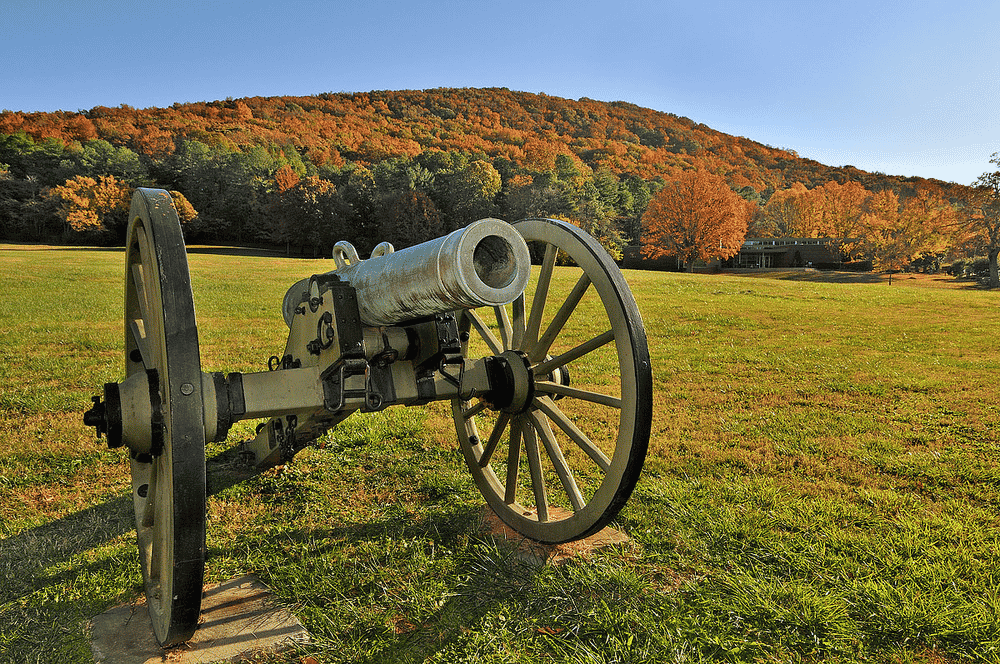
As promised, we’ve included more than just one Civil War site on our list of historic sites in Georgia. In 8th place on our list is Kennesaw Mountain National Battlefield Park.
Kennesaw Mountain National Battlefield Park is a historic site located in northern Georgia, near the city of Marietta, that commemorates the Battle of Kennesaw Mountain, which took place during the American Civil War. The battle was fought on June 27, 1864, and was one of the largest and most significant engagements of the Atlanta Campaign.
The Atlanta Campaign was a military operation launched by Union General William T. Sherman in 1864, with the goal of capturing the city of Atlanta, a key Confederate stronghold. The Confederate army, led by General Joseph E. Johnston, was determined to stop the Union advance, and the two sides clashed in a series of fierce battles and skirmishes throughout the summer.
A Battle For The City Of Atlanta
The Battle of Kennesaw Mountain was fought between Union forces under the command of General Sherman and Confederate forces led by General Johnston. The battle took place on the slopes of Kennesaw Mountain, a prominent landmark that provided a natural defensive position for the Confederate army.
The battle was a brutal and bloody affair, with both sides suffering heavy casualties. The Union forces eventually managed to dislodge the Confederates from their positions on the mountain, but at a high cost.
The battle was a significant setback for the Union army and demonstrated the difficulty of their campaign against a determined Confederate army.
After the war, the site of the Battle of Kennesaw Mountain was preserved as a national park, and in 1917 it was designated as a national battlefield. Today, the park covers over 2,900 acres and includes a museum, a visitor center, and several miles of hiking trails.
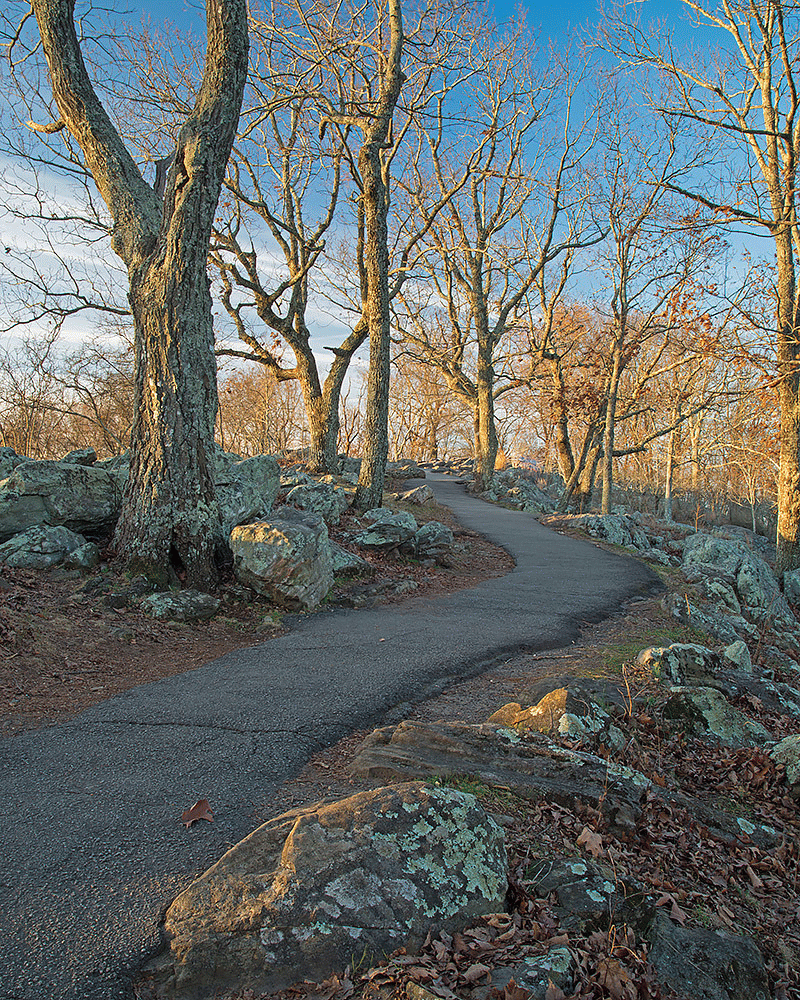
7. Andersonville National Historic Site
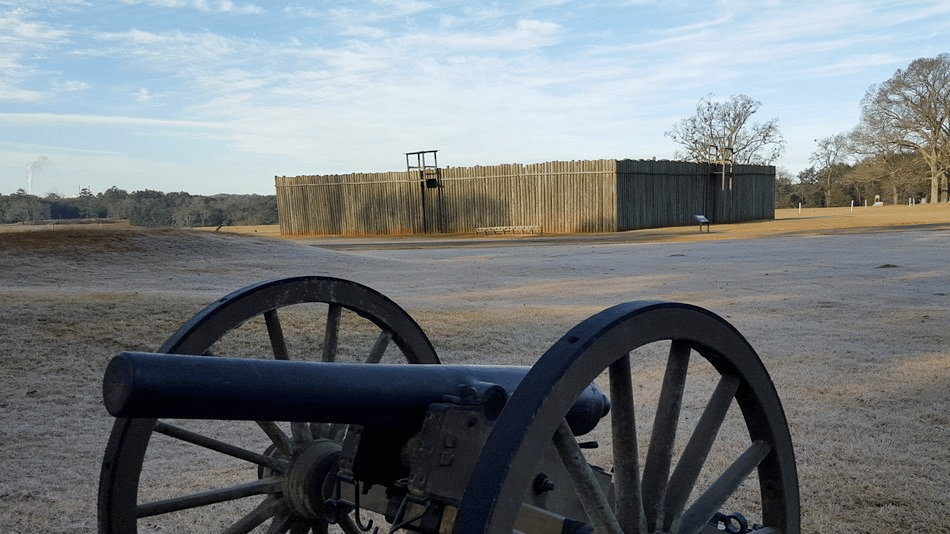
In putting together our list of the Best Historic Sites In Georgia we felt that it was important to include more than just Civil War battlefields. At #7, we’ve included what many historians consider to be the most infamous prisoner-of-war camp during the conflict – Andersonville.
Andersonville is the site of the infamous Confederate prisoner-of-war camp. There were 150 military prisons and Andersonville was both the largest and the most notorious. Of the 45,000 Union soldiers imprisoned there, almost 13,000 died.
In “Civil War Prison Camps,” author Gary Flavion chronicled the suffering at this camp writing, “Robert H. Kellog was 20 years old when he walked through the gates of Andersonville prison. He and his comrades had been captured during a bloody battle at Plymouth, North Carolina. In the depths of Georgia, they discovered that their hardships were far from over.”
Conditions of the Camp
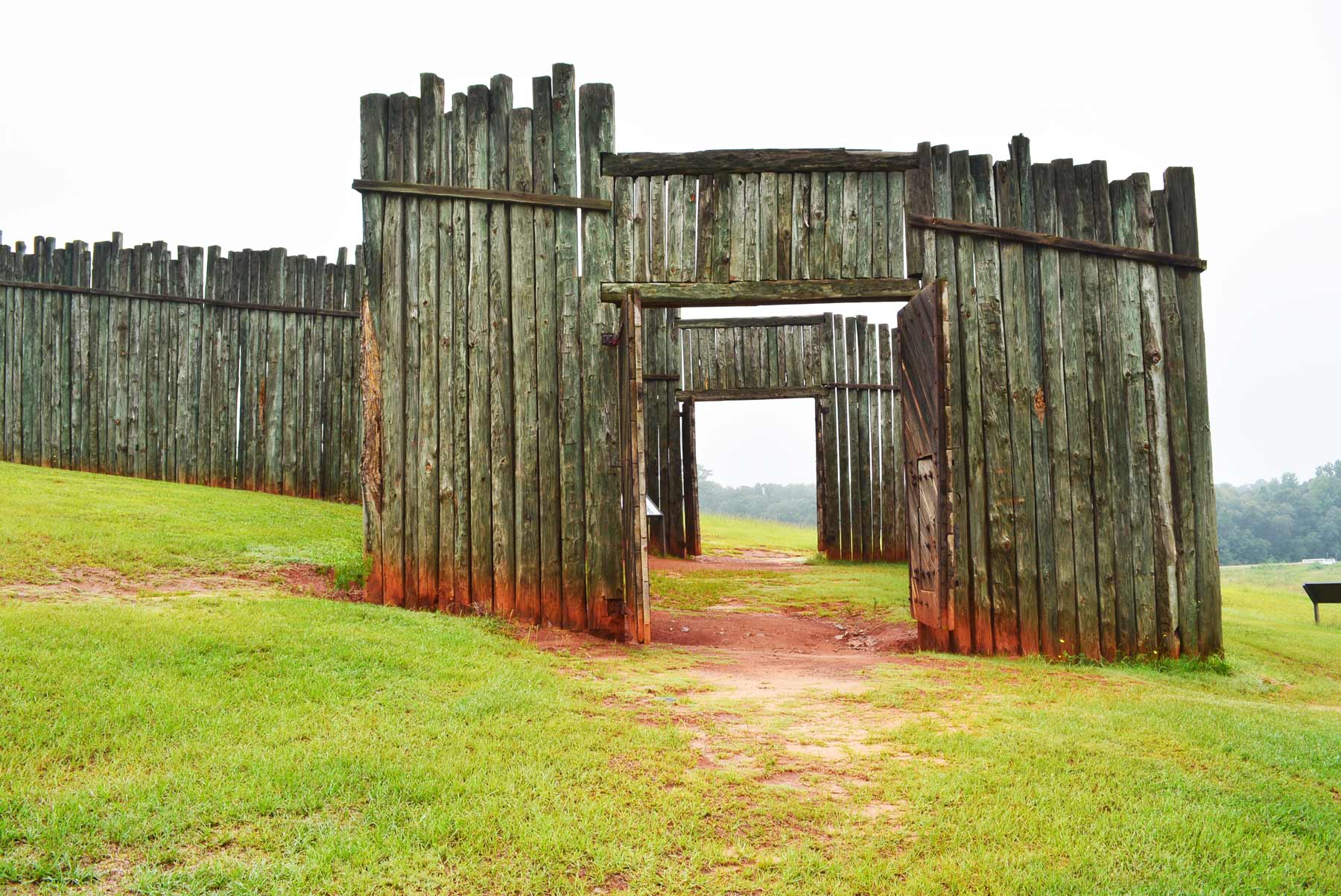
Robert Kellog described the conditions of the camp. “As we entered the place, a spectacle met our eyes that almost froze our blood with horror…before us were forms that had once been active and erect—stalwart men, now nothing but mere walking skeletons, covered with filth and vermin…Many of our men exclaimed with earnestness, ‘Can this be hell?'”
Andersonville is the only national park to serve as a memorial to Americans held as prisoners of war. Andersonville National Historic Site preserves the site of the largest of the many Confederate military prisons that were established during the Civil War.
Explore The Story Of Prisoners Of War
A visit to Andersonville National Historic Site offers a variety of ways to explore the story of prisoners of war in American history.
The National Prisoner of War Museum provides an overview of both the Civil War prison camp and an introduction to the experiences of American prisoners of war through time. It’s the only museum solely dedicated to interpreting the American prisoner of war experience.
The National Prisoner of War Museum is dedicated to all prisoners of war in America’s past who have served their country with dignity and distinction, so that current and future generations will be inspired by their service and sacrifice.
Touring the historic prison site offers an opportunity to contemplate first-hand the hardships faced by Union prisoners of war imprisoned here in 1864-65.
The 20,000 graves in the Andersonville National Cemetery vividly illustrate the continuing cost of freedom. During your visit, the park provides numerous opportunities to better understand the resources found here and the history of prisoners of war through tours, programs, and special events. (Source: NPS)
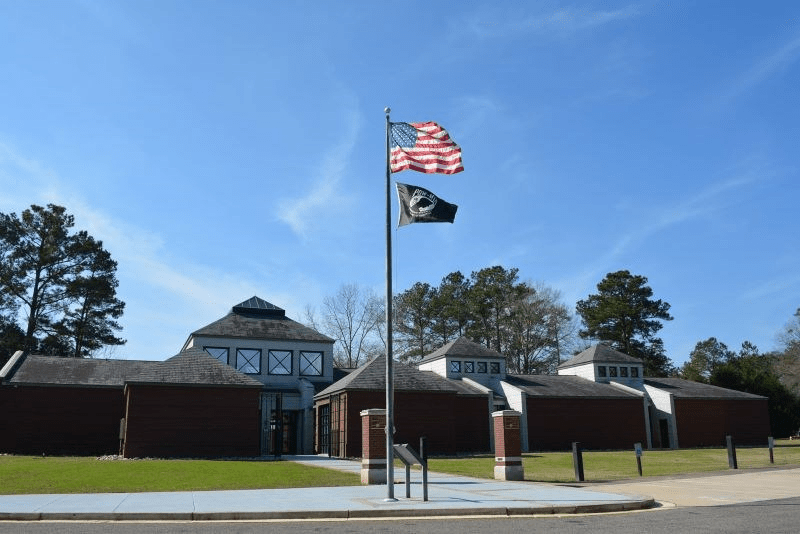
To Learn More
Before you travel to Andersonville, however, you may want to learn a little bit more about it. If so then you’re in luck. I recommend the following resources:
- Andersonville by MacKinlay Kantor. MacKinlay Kantor’s Andersonville tells the story of the notorious Confederate Prisoner of War camp, where fifty thousand Union soldiers were held captive—and fourteen thousand died—under inhumane conditions.
- John Ransom’s Andersonville Diary. A stirring account written by a man who was actually there as a prisoner of war. A whole array of characters are noted through the pages of the diary, from the Andersonville Raiders who were ruthless Union prisoners that persecuted those around them to survive, to more benevolent figures like George Hendryx who was always looking for a way to escape and the Native American Battese who helped Ransom through his darkest days.
- The True Story of Andersonville Prison: A Defense of Major Henry Wirz by James Madison Page. Page was captured on September 21, 1863 along the Rapidan in Virginia and spent the next thirteen months in Southern military prisons, seven of which were at Camp Sumter near Andersonville, Georgia. The prosecution did not call him to testify, but Page felt that he needed to tell his incredible story nonetheless.
- Andersonville and Camp Douglas: The History of the Civil War’s Deadliest Prison Camps by Charles River Editors. This book examines how Andersonville and Camp Douglas became so notorious, and what life was like there for the prisoners.
6. Ocmulgee Mounds National Monument
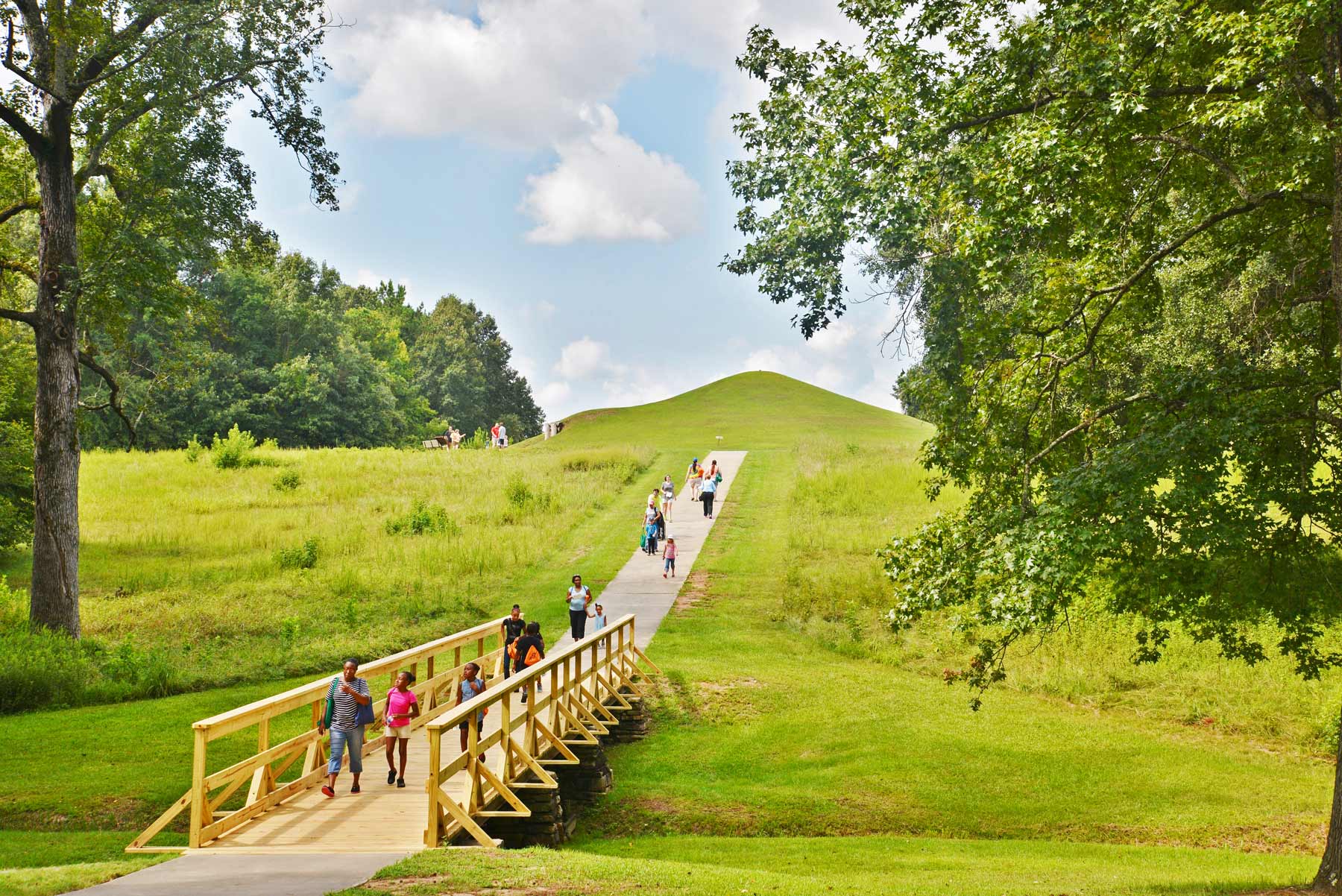
How would you like to visit a site that has evidence of 17,000 years of continuous human habitation? We move from a conflict fought in the 19th century to a place with a past which goes much farther back than that.
At #6 on our list of the Best Historic Sites In Georgia is the Ocmulgee Mounds National Historical Park.
Ocmulgee Mounds National Historical Park, located in Macon, Georgia, offers over ten millennia of culture from the Native Americans of the Southeastern Woodlands.
Visitors can walk the grounds and see ceremonial mounds, burial mounds and defensive trenches. It took skilled laborers many years to construct these marvels.
In the 1930s and 1940s, workers excavated portions of eight mounds, finding an array of archaeological artifacts which document a trading network and sophisticated culture.

Things To Do
Here are some things to do at Ocmulgee Mounds National Monument:
- Visit the Visitor Center: The park’s Visitor Center has exhibits and displays that offer an overview of the history and culture of the Native Americans who lived in the area for thousands of years. You can watch a short film about the park’s history and browse through the exhibits to learn about the different periods of Native American history at the site.
- Explore the Mounds: There are several mounds in the park that were built by the Native Americans who lived here. The largest mound, the Great Temple Mound, stands 56 feet tall and covers over 3 acres. You can climb to the top of the mound for a great view of the surrounding area.
- Take a Guided Tour: The park offers guided tours that are led by rangers or volunteer guides. The tours provide more in-depth information about the history and culture of the Native Americans who lived in the area.
- Hiking: The park has several hiking trails that allow you to explore the natural beauty of the park. The most popular trail is the Ocmulgee River Trail, which takes you along the river and through a hardwood forest.
- Attend Special Events: The park hosts special events throughout the year, including the Ocmulgee Indian Celebration, which is held annually in September. The celebration features Native American music, dance, storytelling, and crafts.
- Picnic: The park has several picnic areas where you can enjoy a meal surrounded by the beauty of the park.
- Photography: The park offers many opportunities for photography, whether you’re interested in capturing the natural beauty of the park or the archaeological remains of the Native Americans who lived here.
Top 5 Historic Sites In Georgia
5. Fort Pulaski National Monument
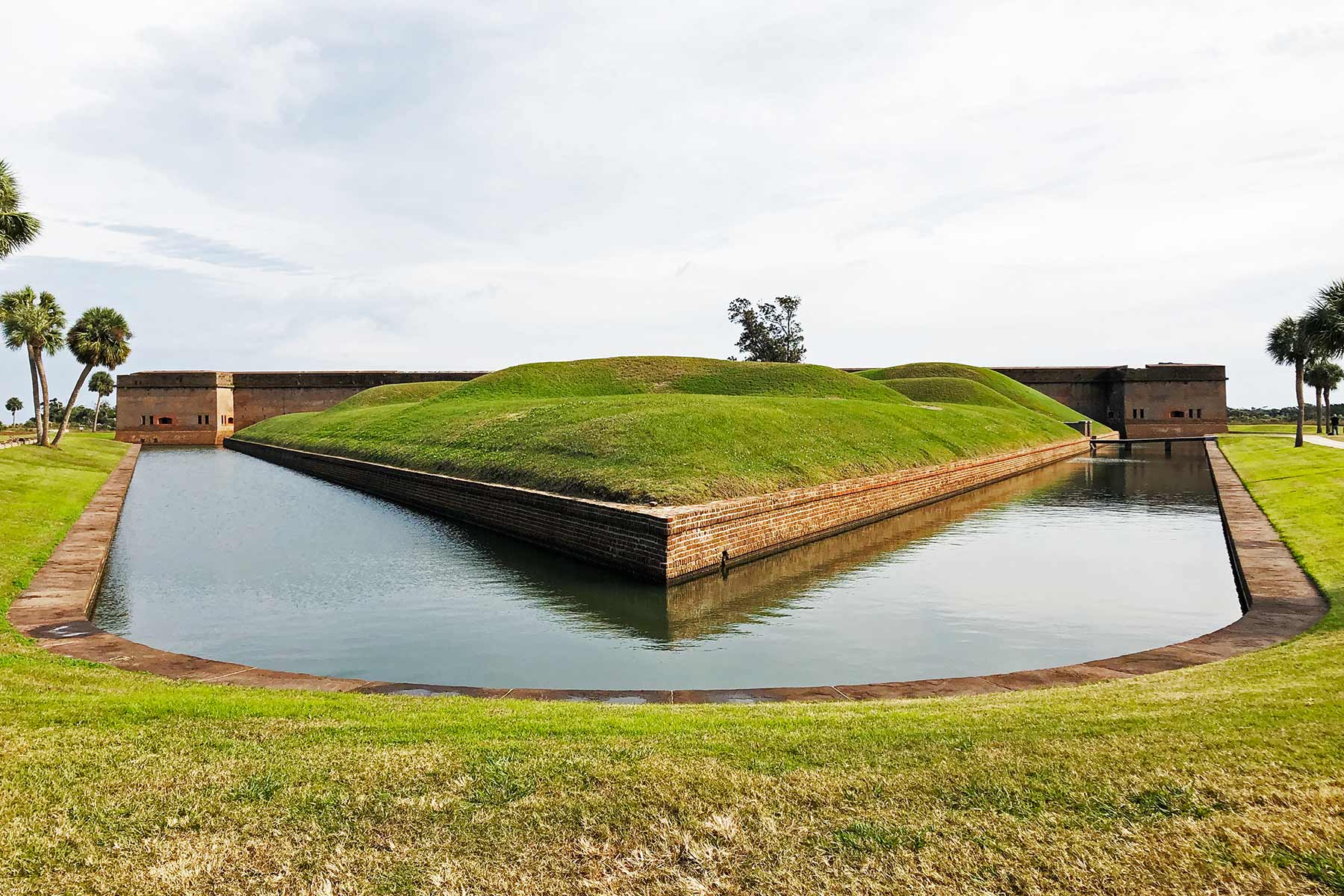
We’re on to our Top 5 Historic Sites In Georgia. Or, as we like to think, the best of the best! Coming in at #5 is Fort Pulaski National Monument.
Did you know that Fort Pulaski was ranked one of the “most spectacular harbor defense structures” in the United States during the Civil War era? Its 7 1/2-foot solid brick walls and impressive masonry secured it against siege until Union soldiers used new, experimental rifled artillery to shatter its walls in 1862.
The Fort Pulaski National Monument is located on Cockspur Island between Tybee Island and Savannah.
The fort was originally built after the War of 1812 when President James Madison ordered a new series of coastal defenses to protect the United States against future invasions.
Interestingly, the fort’s construction began in 1829 under the direction of Major General Babcock and a recent West Point graduate by the name of Robert E. Lee.
Lee was a young lieutenant at the time who would distinguish himself in the Mexican American War before moving on to even greater accomplishments in the American Civil War.
Fort Pulaski in the Civil War
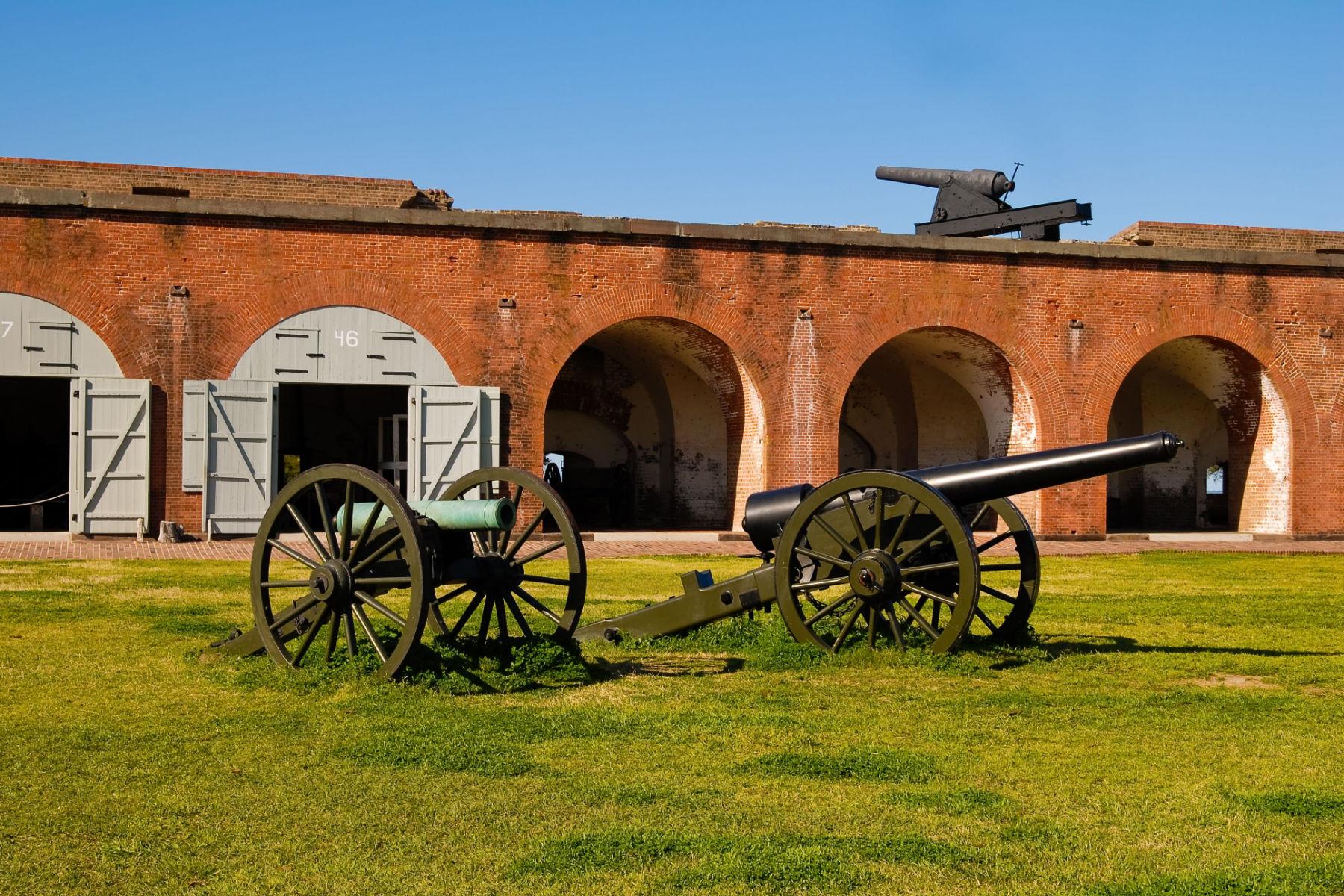
The fort figured prominently during the Civil War. The only battle at Fort Pulaski occurred on April 10th & 11th, 1862, between Union forces on Tybee Island and Confederate troops inside the fort. Union forces occupied the fort beginning in April of 1862.
It was used as a place where the Union tested new weaponry including a rifled canon. The fort also held Confederate prisoners of war.
Things To Do At Fort Pulaski
Here are some things to do at Fort Pulaski National Monument:
- Explore the fort: Take a self-guided tour of the fort to learn about its history and construction. You can also participate in guided tours led by park rangers to gain a deeper understanding of the fort’s importance.
- Attend a ranger program: Join a ranger-led program to learn about the history of the fort and the role it played in the Civil War. The programs may include talks, walks, and demonstrations.
- Walk the trails: Fort Pulaski National Monument has several hiking trails that offer beautiful views of the surrounding area. The North Pier Trail and Lighthouse Overlook Trail are two popular options.
- Picnic: Bring a picnic and enjoy the scenic views of the fort and the surrounding landscape. The picnic area is located near the visitor center.
- Fishing: Fishing is allowed in the surrounding waters of the park. You can bring your own gear or rent it from the visitor center.
- Birdwatching: Fort Pulaski National Monument is home to a variety of bird species, including eagles, ospreys, and herons. Bring your binoculars and see how many different birds you can spot.
- Visit Cockspur Island Lighthouse: Located just outside of the fort, this historic lighthouse was built in 1856 and is a popular spot for photos.
- Watch a cannon firing: Periodically throughout the year, the park offers demonstrations of the fort’s cannons being fired. Check the park’s website or ask a ranger for details.
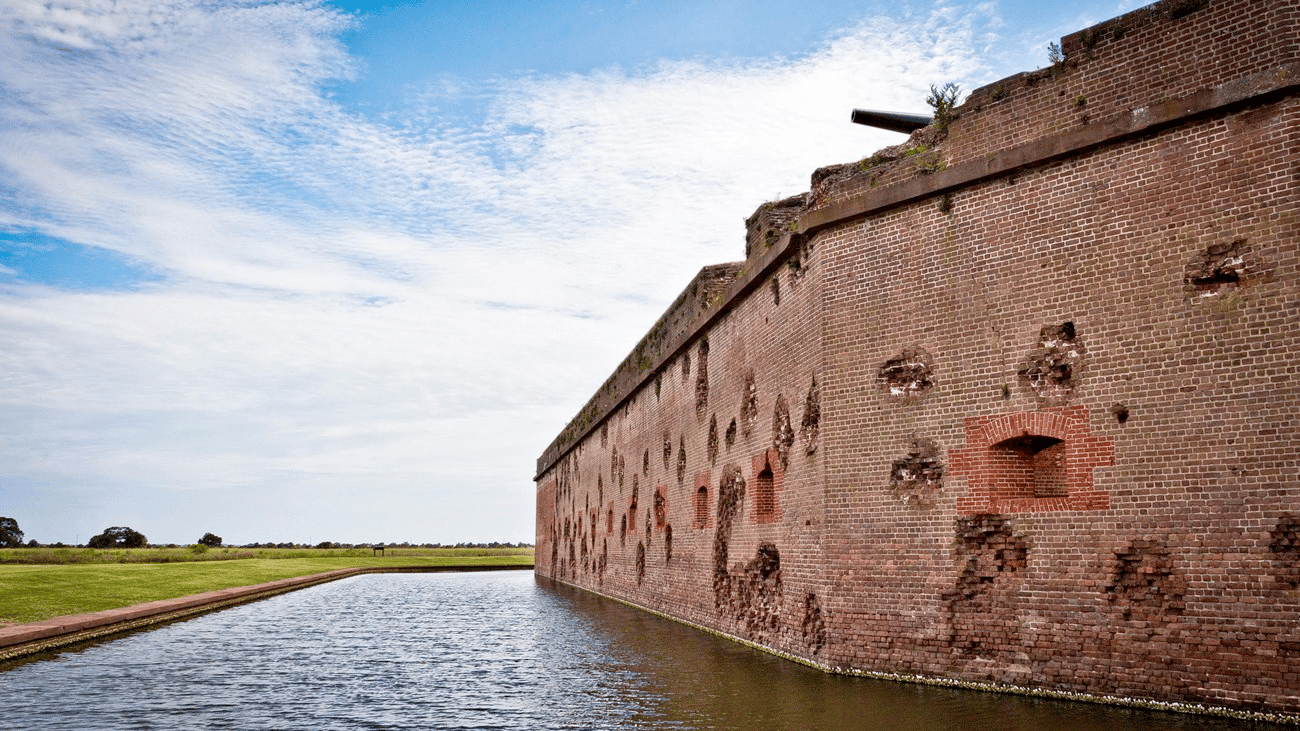
4. Chickamauga & Chattanooga National Military Park
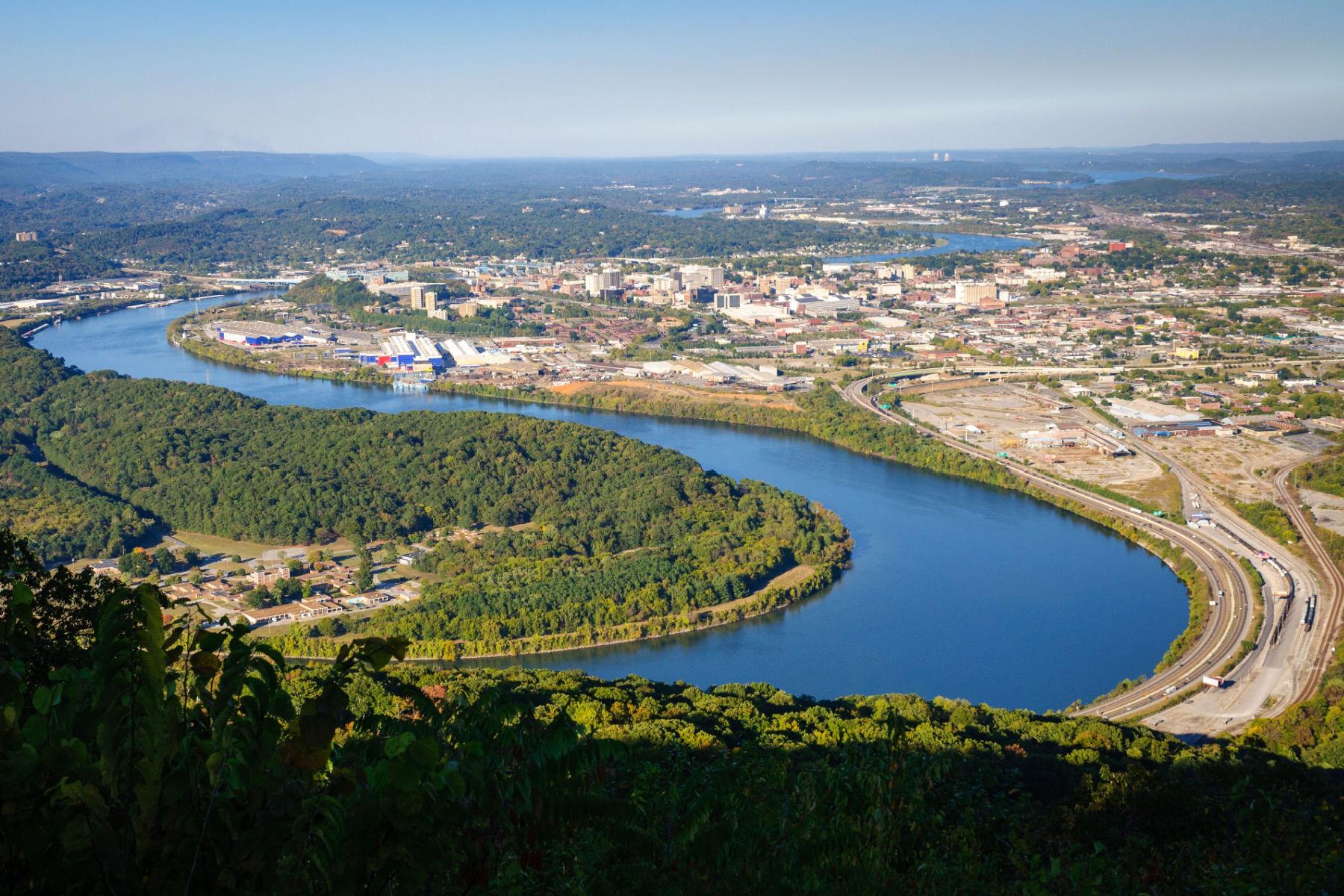
We’re on to the “Final Four” on our list of the Best Historic Sites In Georgia. And, at #4, we offer you not one, but two Civil War battles. Welcome to Chickamauga & Chattanooga National Military Park!
Chickamauga and Chattanooga National Military Park is a historic site located in northwest Georgia and eastern Tennessee. The park commemorates two major battles of the American Civil War: the Battle of Chickamauga, fought on September 19-20, 1863, and the Chattanooga Campaign, fought from September to November of that same year.
The Battle of Chickamauga was one of the bloodiest battles of the Civil War, resulting in over 34,000 casualties.
Confederate General Braxton Bragg’s Army of Tennessee attacked Union General William Rosecrans’ Army of the Cumberland and pushed them back into Chattanooga, Tennessee. The Union army was able to hold the city, but only barely, and the Confederate victory at Chickamauga allowed them to lay siege to the city for the next two months.
Grant Turns The Tide Of Battle
The Chattanooga Campaign began in late September 1863, when Union General Ulysses S. Grant arrived to take command of the Union forces in the region.
He immediately began to reorganize and reinforce the army, and by late November, he had pushed the Confederates back to the Georgia border. The Union victory at Chattanooga opened up the Deep South to Union forces and helped to turn the tide of the war in their favor.
After the war, the Chickamauga and Chattanooga battlefields were established as national military parks, the first of their kind in the United States.
The park was officially dedicated in 1895, and over the years, additional land and monuments were added to the park. Today, the park encompasses over 9,000 acres and includes a museum, visitor center, and over 100 miles of hiking trails.

Things To Do
Chickamauga and Chattanooga National Military Park offers a variety of activities and experiences for visitors. Here are some things to do while visiting the park:
- Take a guided tour: The park offers a variety of guided tours, including walking tours, ranger-led tours, and bus tours. These tours provide a deeper understanding of the history of the park and the battles that took place there.
- Visit the museum and visitor center: The park’s museum and visitor center provide a wealth of information about the history of the park and the Civil War. Exhibits include artifacts, photographs, and interactive displays.
- Hike the trails: The park offers over 100 miles of hiking trails, ranging from easy walks to challenging hikes. The trails take visitors through the historic battlefields and offer beautiful views of the surrounding landscape.
- Attend a living history program: The park hosts a variety of living history programs throughout the year, where visitors can see reenactors in period dress demonstrating the daily life of Civil War soldiers.
- Explore historic sites: The park is home to a number of historic sites, including Snodgrass Hill, where a significant portion of the Battle of Chickamauga was fought, and Point Park, which offers panoramic views of Chattanooga and the surrounding area.
- Attend special events: The park hosts a variety of special events throughout the year, including concerts, festivals, and reenactments. Check the park’s website for upcoming events.
- Picnic: The park has several picnic areas where visitors can enjoy a meal while taking in the beautiful scenery.
- Birdwatching: The park is home to a variety of bird species, including eagles, hawks, and woodpeckers. Bring your binoculars and see how many different birds you can spot.
- Horseback riding: The park offers several miles of horseback riding trails, allowing visitors to explore the park from a different perspective.
3. The Little White House At Warm Springs

We’re on to the final three and you’re going to be impressed. At #3, we turn our attention from the bloodiest conflict in American history to one of the most consequential American presidents of all time.
At the The Little White House At Warm Springs you can learn the story of the only President of the United States to be elected more than twice.
Franklin D. Roosevelt led the nation through the twin crises of the Great Depression and World War Two. In the process, he transformed the role of the federal government.
The programs unleashed by FDR’s New Deal sought to insure that the economic, social, and political benefits of American capitalism were distributed more equally among America’s large and diverse populace.
FDR also transformed the American presidency. Under his leadership, the President’s duties grew to encompass not only those of the chief executive—as implementer of policy—but also chief legislator—as drafter of policy. He greatly increased both the powers and the responsibilities of the office.
If there is an overarching lesson from the life and achievements of Franklin Delano Roosevelt which is applicable to our own times then perhaps it is this: An enlightened and progressive government should use its resources not just to alleviate need but to help people gain confidence that they have something to contribute to the greater good.
Things To Do
The Little White House in Warm Springs, Georgia, offers visitors a chance to step back in time and explore the history of the presidency of Franklin D. Roosevelt. Here are some things to do at the Little White House:
- Take a guided tour: Visitors can take a guided tour of the Little White House, which includes the President’s living quarters, dining room, and a museum displaying artifacts from Roosevelt’s life and presidency.
- Visit the FDR Memorial Museum: The FDR Memorial Museum is located on the grounds of the Little White House and offers a glimpse into the life and times of Franklin D. Roosevelt, including his New Deal policies and his leadership during World War II.
- Enjoy the park and gardens: The Little White House is situated on beautiful grounds, featuring gardens, walking trails, and a spring-fed pool that Roosevelt used for therapy. Visitors can enjoy a picnic, take a stroll, or simply relax in this serene setting.
- Attend special events: The Little White House hosts special events throughout the year, such as reenactments, holiday celebrations, and concerts. Check the website for a schedule of upcoming events.
- Explore the surrounding area: Warm Springs is surrounded by beautiful natural areas, including the Pine Mountain Trail and the F.D. Roosevelt State Park. Visitors can explore these areas on foot, by bike, or on horseback.

2. Martin Luther King Jr. National Historical Park
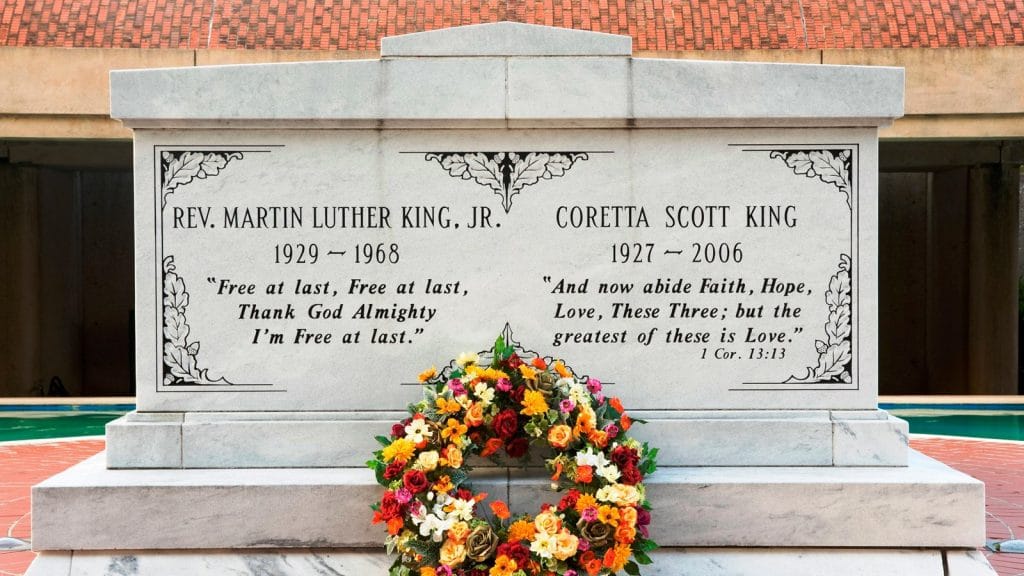
The final two historic sites have at least two things in common. Both celebrate men who were born and raised in Georgia. And both of these men were awarded the Nobel Prize for Peace.
First up is at #2 is the Martin Luther King Jr. National Historical Park. But before turning our attention to the site, it’s important to review the legacy of the man.
Martin Luther King, Jr.
Martin Luther King Jr. (1929-1968) was an American Baptist minister, activist, and leader in the American Civil Rights Movement. He is best known for his role in advancing civil rights using nonviolent civil disobedience based on his Christian beliefs.
King was born in Atlanta, Georgia and educated at Morehouse College, Crozer Theological Seminary, and Boston University, where he earned a Ph.D. in systematic theology. He became a Baptist minister and began working for civil rights in the 1950s.
King played a key role in the Montgomery Bus Boycott in 1955-1956, which led to the desegregation of the city’s bus system.
He went on to lead a number of other campaigns, including the Birmingham campaign and the March on Washington for Jobs and Freedom, where he delivered his famous “I Have a Dream” speech in 1963.
King’s leadership and activism helped to secure the passage of several important pieces of civil rights legislation, including the Civil Rights Act of 1964 and the Voting Rights Act of 1965.
King’s commitment to nonviolent protest and his message of equality and justice for all have made him an enduring symbol of the American Civil Rights Movement. In recognition of this fact, he was awarded the Nobel Peace Prize in 1964 for his work towards social justice and civil rights.
Tragically, King was assassinated in Memphis, Tennessee on April 4, 1968.
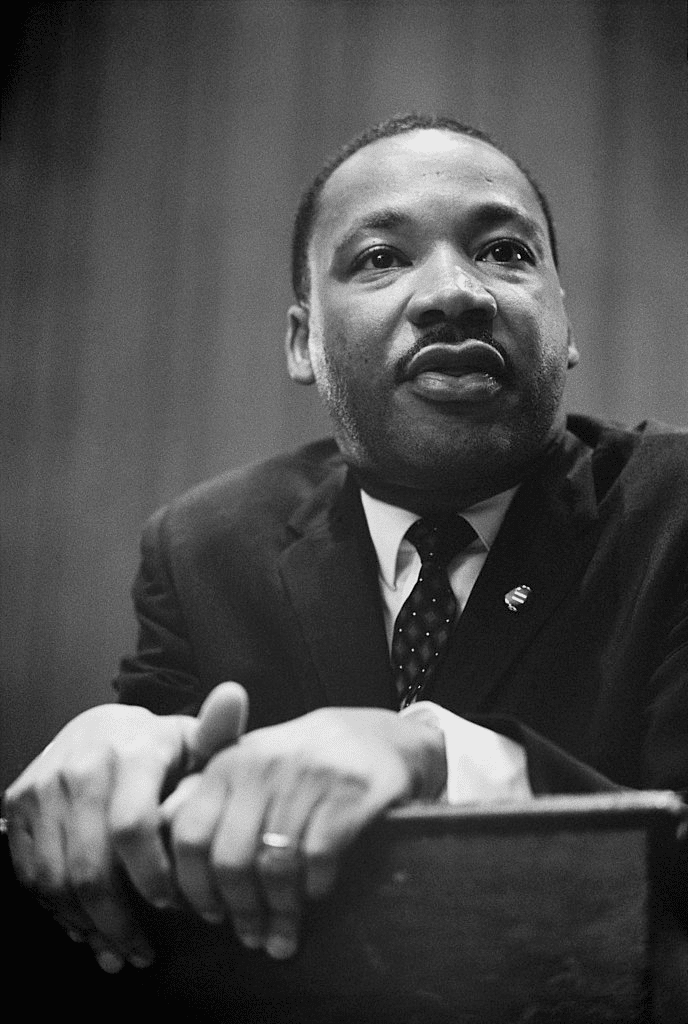
“I have decided to stick with love. Hate is too great a burden to bear.”
-dr. martin luther king, jr.
Things To See
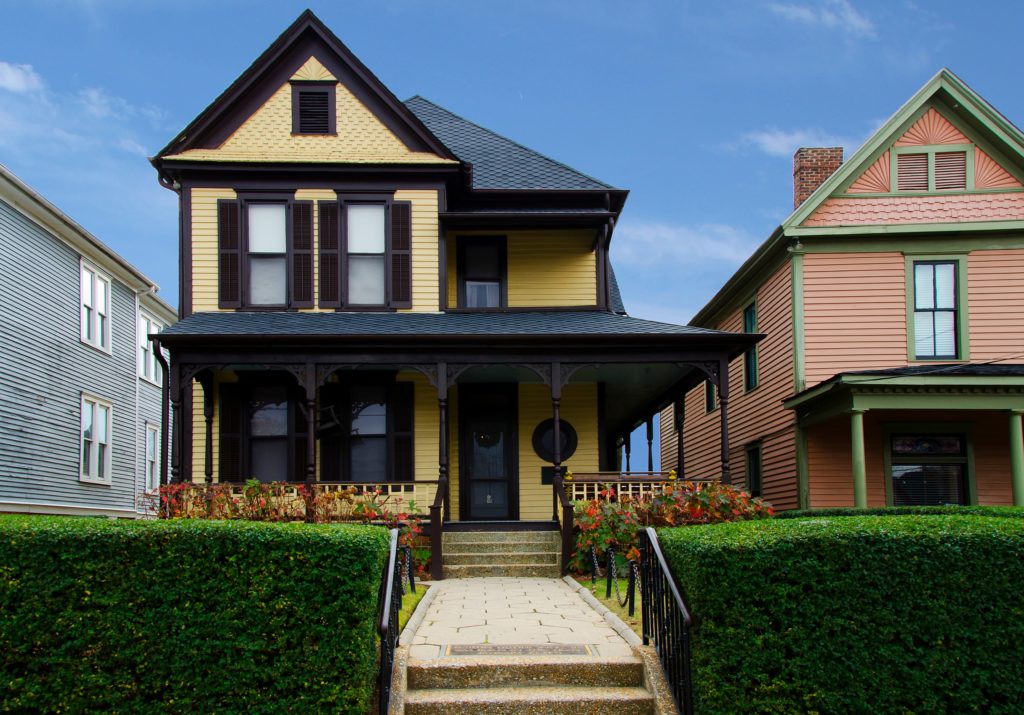
The Martin Luther King Jr. National Historical Park is a national park that preserves and commemorates the life and legacy of civil rights leader Martin Luther King Jr.
The park includes several buildings and sites that are significant to Dr. King’s life and work, including his boyhood home, the original Ebenezer Baptist Church, where he and his father both served as pastors, and The Martin Luther King Jr. Center for Nonviolent Social Change, also known as “The King Center”.
The National Park Service has restored many of the neighboring buildings to reflect their appearances in the 1930s and 1940s, the period of time when Dr. King grew up there.
This allows visitors to step into that era and imagine themselves walking with the residents, hearing the noise of this lively neighborhood and experiencing what life was like in those tumultuous times.
Civil Rights Walk Of Fame
The park also includes the International Civil Rights Walk of Fame, where visitors can see the footprints and signatures of civil rights leaders from around the world, and the Martin Luther King Jr. Memorial Garden, a peaceful place for reflection and contemplation.
The park offers a variety of educational programs and events throughout the year, including guided tours, lectures, and workshops, which help visitors to understand the significance of Dr. King’s life and work and the ongoing struggle for civil rights and social justice.
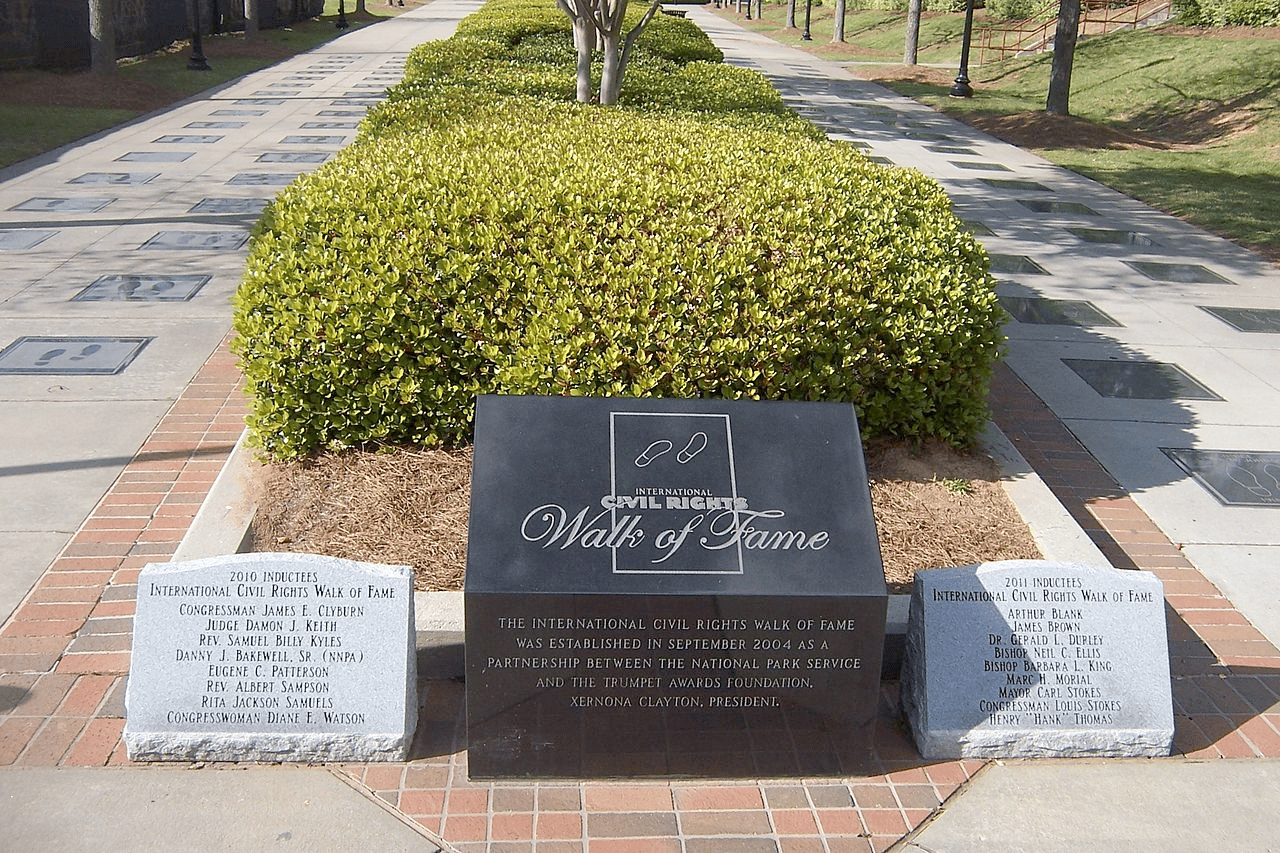
1. Jimmy Carter National Historical Park
We believe that we’ve saved the best for last. More Than Just Parks #1 Historic Site In Georgia celebrates the only Georgian to be elected President of the United States. It’s the Jimmy Carter National Historical Park!
The Jimmy Carter National Historical Park celebrates the man who has been universally acclaimed as the most successful former president in history.
Carter, however, was not only a successful ex-president. History is finally catching up with the man who today is recognized as having been decades ahead of his time.
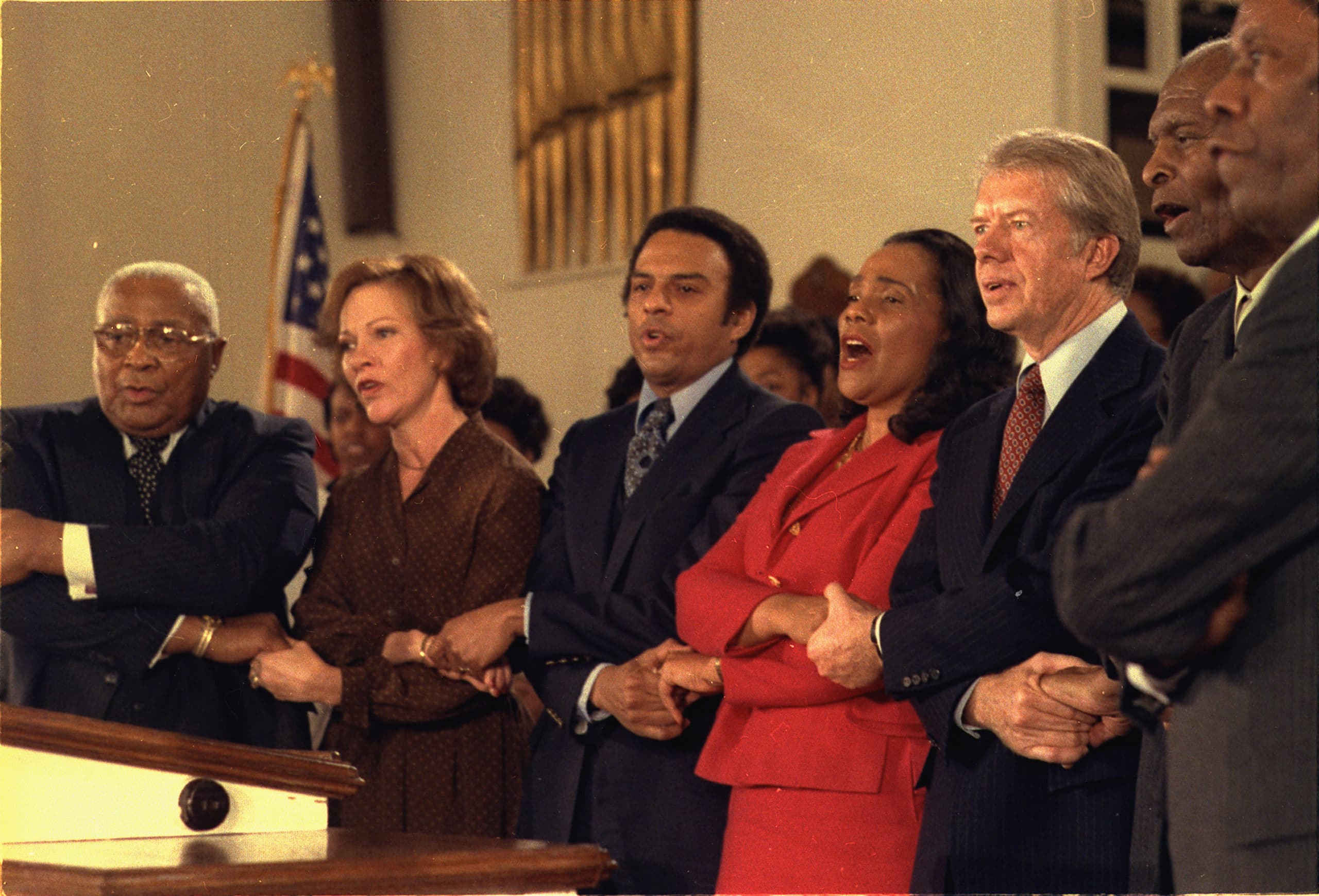
Decades Ahead Of His Time
Though from a segregated and racist background in Georgia, Carter pushed for affirmative action and prioritized diversity among judicial nominees, including the appointment of Ruth Bader Ginsburg and Amalya Lyle Kearse.
He startled the globe by personally brokering the critical Middle East peace treaty between Anwar Sadat and Menachem Begin at Camp David.
He ceded access to the Panama Canal, angering conservatives who thought he was giving away an American asset.
Through the Alaska National Interest Lands Conservation Act, he doubled the national park system and conserved over 100m acres of land – the most sweeping expansion of conserved land in American history.

Carter was right on asking us to drive less, to reduce our dependence on foreign oil, to focus on conservation and renewable energy. Not only was Carter’s vision a path not taken, it was a path mocked. Reagan removed the solar panels from the White House, politicized the environmental movement and painted it as a fringe endeavor.
-Megan Mayhew bergman, the guardian, decades ahead of his time: history catches up with visionary jimmy carter
Jimmy Carter’s Presidency Was Not What You Think
Regrettably, the political narrative surrounding President Carter in the aftermath of his 1980 defeat to Ronald Reagan has largely been shaped by his political adversaries. The reality, however, is quite different.
Kai Bird is a Pulitzer Prize-winning historian and journalist. He is the author of The Outlier: The Unfinished Presidency of Jimmy Carter.
Bird notes in a New York Times editorial that Carter was probably the most intelligent, hard-working and decent man to have occupied the Oval Office in the 20th century.
As Bird writes, “His [Carter’s] presidency is remembered, simplistically, as a failure, yet it was more consequential than most recall. He delivered the Camp David peace accords between Egypt and Israel, the SALT II arms control agreement, normalization of diplomatic and trade relations with China and immigration reform.”
“He made the principle of human rights a cornerstone of U.S. foreign policy, planting the seeds for the unraveling of the Cold War in Eastern Europe and Russia.”

The President Who Tried To Save The Planet
In an article which appeared in the Washington Post in February of 2023, the newspaper referred to the former president as: “Jimmy Carter, The President Who Tried To Save The Planet.”
The Post went on to note that: “Despite serving a single term, Jimmy Carter ranks as one of the most consequential U.S. presidents when it comes to environmentalism, according to historians, conservationists and several former federal officials.”
To Learn More About Carter’s Groundbreaking Work As A Conservationist & Environmentalist, check out the following articles by More Than Just Parks:
(1) Jimmy Carter Was The Greatest Conservation President
(2) 14 Reasons Why Jimmy Carter Is America’s Greenest President
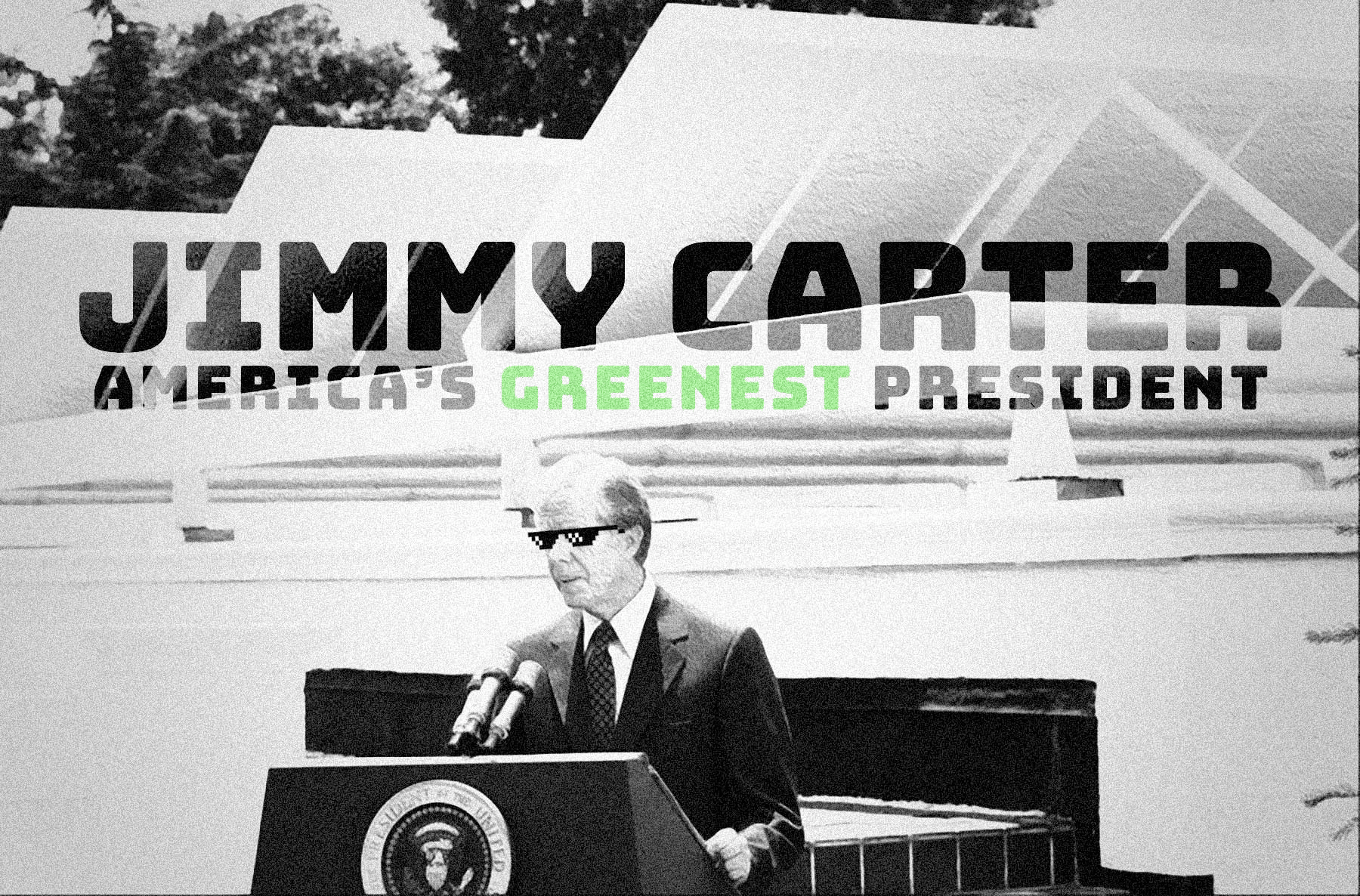
Things To See & Do at The Jimmy Carter National Historical Park
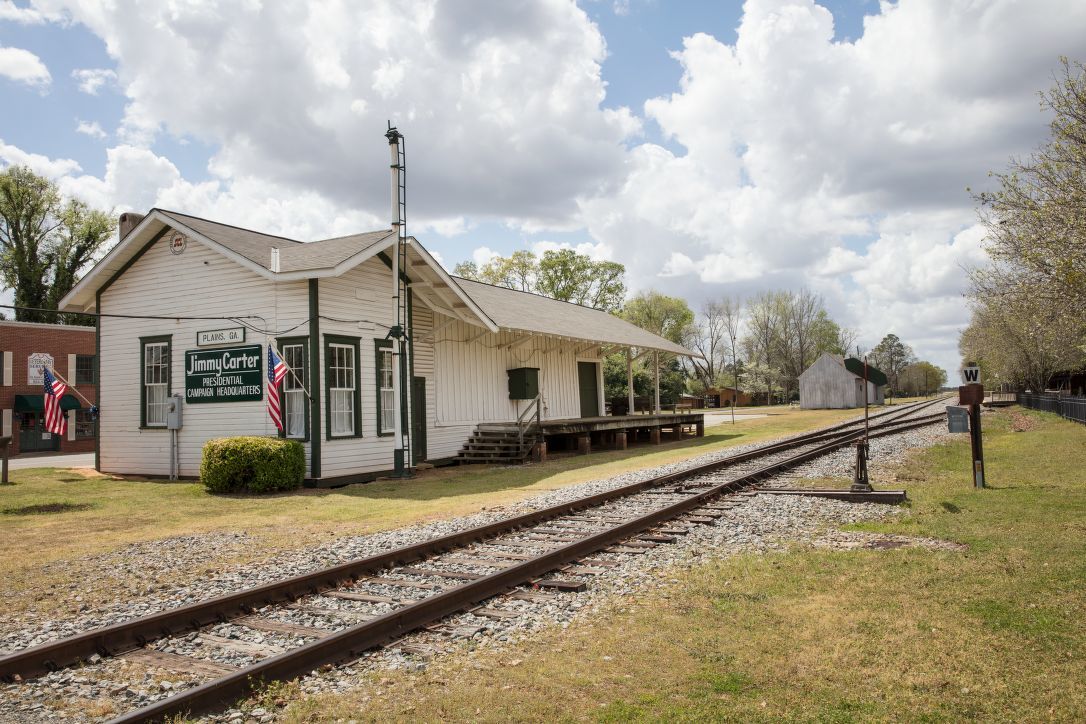
Here are some things to see and do at the park:
- Visit the Jimmy Carter Boyhood Farm: This is the home where Jimmy Carter spent his early years, and it has been restored to its 1930s appearance. Visitors can tour the house and see the farm buildings, gardens, and the nearby pond.
- Walk the trails: The park has several trails that wind through the fields and forests around Plains. The trails range from easy walks to more challenging hikes and offer a chance to see wildlife and natural features such as swamps and wetlands.
- Explore the Plains High School Museum: This museum is located in the building that was formerly the Plains High School, where Jimmy Carter attended. It features exhibits on the history of the school and the community, including exhibits on the local African American community and the 1976 presidential campaign.
- Tour the Carter compound: This is the home where Jimmy and Rosalynn Carter have lived since they left the White House. Visitors can take a guided tour of the home and see the gardens and the former president’s woodworking shop.
- Attend special events: The park hosts a number of special events throughout the year, including a Christmas festival, a peanut festival, and a commemoration of the March 21, 1965 civil rights march from Selma, Alabama to Montgomery, Alabama.
- Visit the Visitors Center: The Visitors Center offers exhibits, films, and information about the park and the surrounding area. It also has a gift shop and a bookstore with books on Jimmy Carter’s life and presidency.

“I have one life and one chance to make it count for something… My faith demands that I do whatever I can, wherever I am, whenever I can, for as long as I can with whatever I have to try to make a difference.”
-Jimmy Carter
The Pattiz Brothers With The 39th President Of The United States

Learn About Our President Carter Film
List Of Historic Sites In Georgia
- Jimmy Carter National Historical Park
- Martin Luther King, Jr. National Historical Park
- Roosevelt’s Little White House At Warm Springs
- Chickamauga & Chattanooga National Military Park
- Fort Pulaski National Monument
- Ocmulgee Mounds National Monument
- Andersonville National Historic Site
- Kennesaw Mountain National Battlefield Park
- Fort Frederica National Monument
- Jefferson Davis Memorial Historic Site
- Dahlonega Gold Museum
- Reynolds Mansion On Sapelo Island
- Pickett’s Mill Battlefield State Historic Site
- Jarrell Plantation Historic Site
- Fort King George State Historic Site
Why Trust Us About Historic Sites In Georgia?
We’re Jim Pattiz and Will Pattiz, collectively known as the Pattiz Brothers and we absolutely LOVE the national parks.
You should probably know that we don’t just make this stuff up out of thin air. We’ve spent our entire adult lives exploring and filming America’s national parks and public lands.
We’ve worked with the National Park Service, the Department of Interior, USDA, U.S. Forest Service, and more for years creating films on important places and issues. Our work has been featured in leading publications all over the world and even some people outside of our immediate family call us experts on the national parks.
And, in 2018, our father – having spent a lifetime teaching history – joined us so that he could help us to tell the stories behind these amazing places.
Meet The Parks Brothers
We Hope You’ll Follow Our Journey

Our goal here at More Than Just Parks is to share the beauty of America’s national parks and public lands through stunning short films in an effort to get Americans and the world to see the true value in land conservation.
We hope you’ll follow our journey through the parks and help us to keep them the incredible places that they are. If you’re interested in joining the adventure then sign up below!
Related Links
What Is A National Park? To learn more about the difference between the various National Park Service designations check out our article that explains everything!
Civil War Sites: Top 10 Best Civil War Sites & Battlefields
Georgia National Parks: 12 AMAZING Georgia National Parks
Jimmy Carter: Jimmy Carter, Not Theodore Roosevelt, Was The Greatest Conservation President
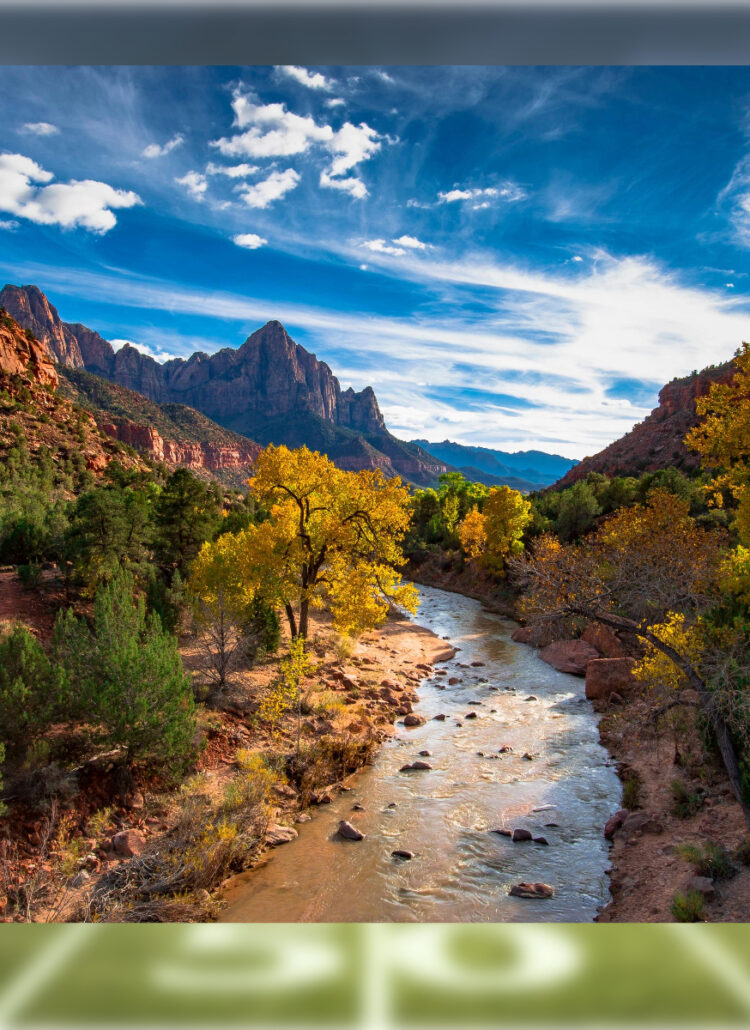


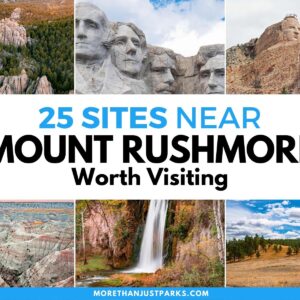

Leave a Reply